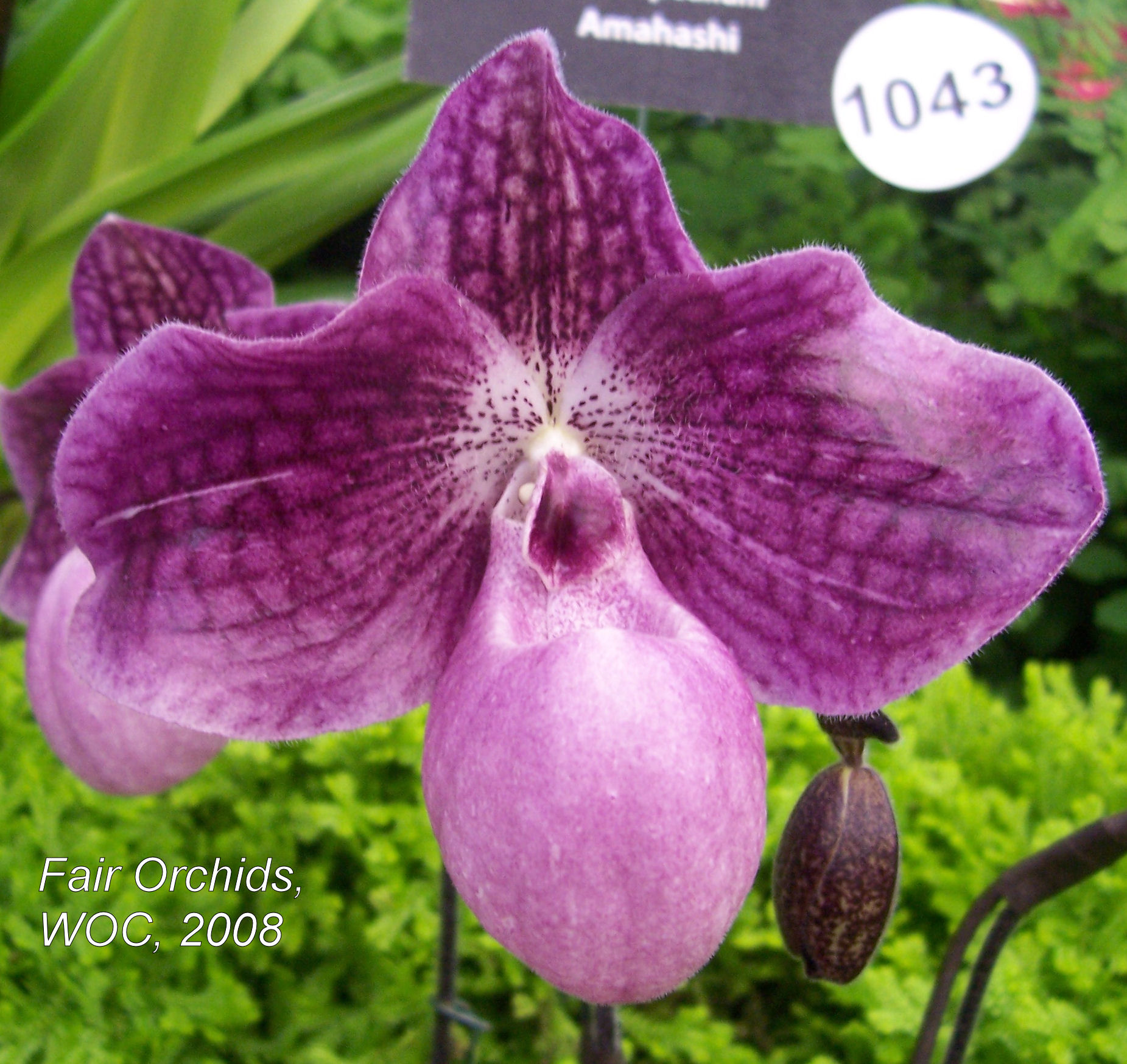Whether you know them as Lady Slippers, Cypripedium (obsolete designation) or Paphiopedilum (correct genus), I have been addicted to 'slippers' since 1970. While I predominantly grow complex hybrids, I have a weakness for 3 species: fairrieanum, spicerianum and charleworthii, as well as hybrids made with these (both primary and complex x species).
Complex hybrids have evolved from species over some 6-15 generations. 'Bulldog' or 'Toad' hybrids rely heavily on Paph. insigne, Paph. villosum & Paph. spicerianum, with smaller doses of up to 6-8 other species. There is usually a small % of Paph. bellatulum, contributing broad petals, but unfortunately also a dominant short stalk.
Most Paphiopedilum species have been found in 3 basic variations:
COLORED . . . . . . . . . . Some in more than one version, see Paph. villosum below
ALBA (var. Hyeanum) Normal pattern, but pure white/green (or yellow-green), see Paph. sukhakulii to the right
ALBINO . . . . . . . . . . . . Pure white


Paph. insigne is the strongest influence in most complex hybrids. More than 50 variations have been recognized in this species. Standard version (left), and var. Sanderae (semi-alba version) are shown in the first photo. Var. 'Harefield Hall' (a natural triploid clone) is shown in the second photo. Notice the difference in dorsal spot size between standard and triploid clones.
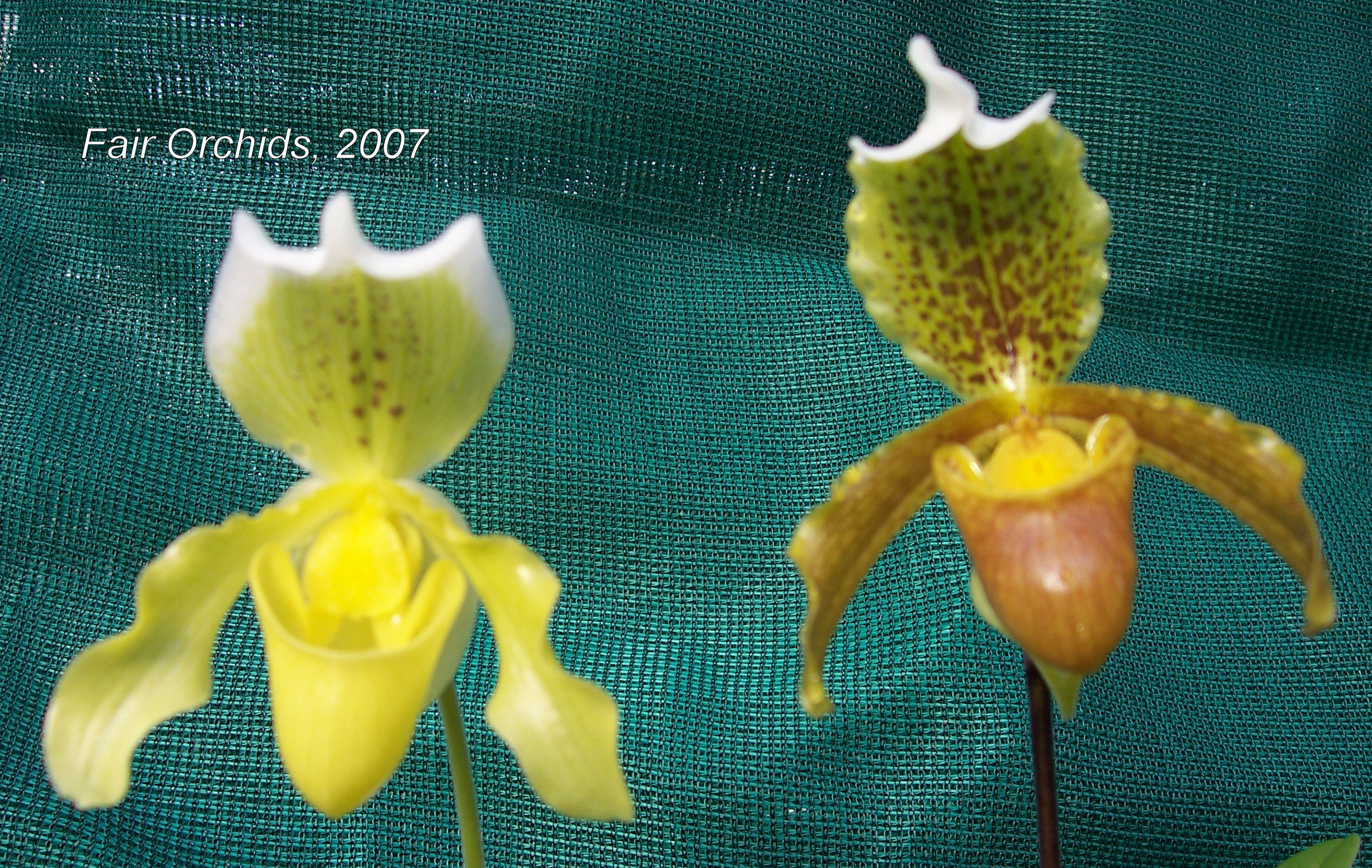
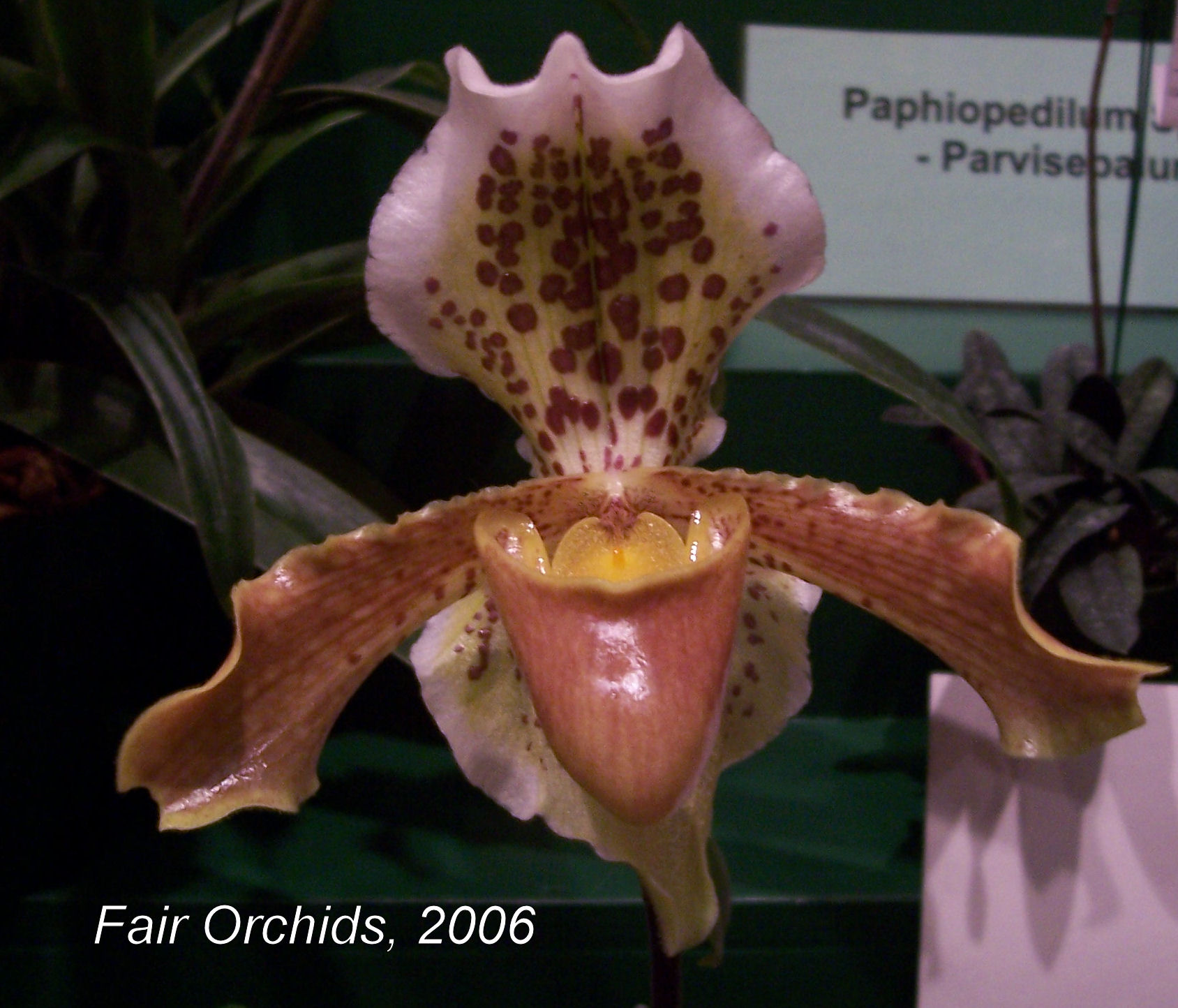
Paph. villosum contributes large flower, leaf and stalk size, though the species tends to be somewhat 'floppy' (it is often found growing as an epiphyte). Here are 3 different colored clones, the first is considered standard; the last is the distinctly colored var. 'Annamense'.

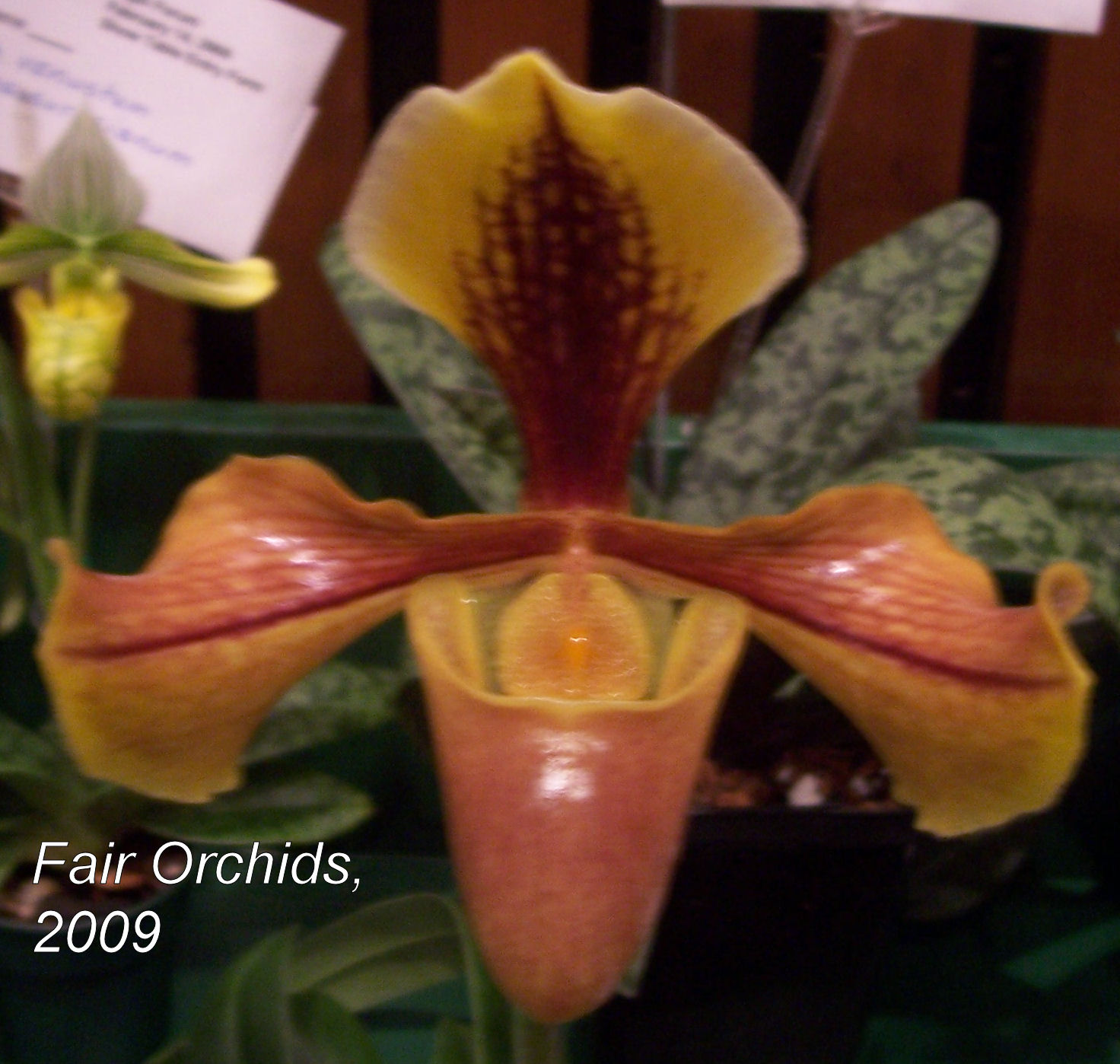
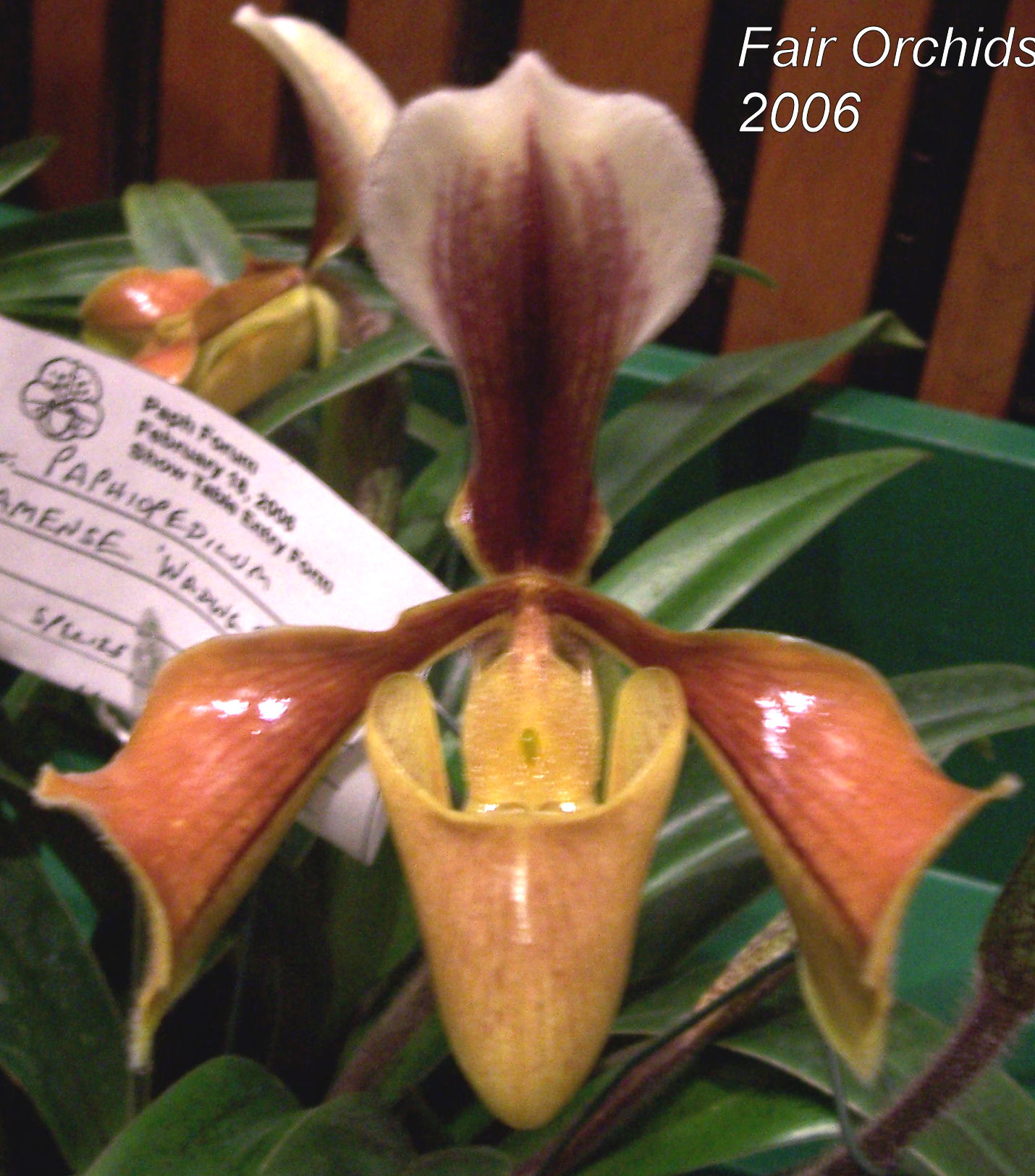
The third significant contributor in complex Paphiopedilum hybrids is Paph. spicerianum. The first photo shows Paph. spicerianum 'Irene Schwarz', which was probably wild collected more than 50 years ago. The second photo shows how much improvement can be achieved through line breeding, this one coming from the Orchid Zone program. The flower was slightly deformed in shipment.
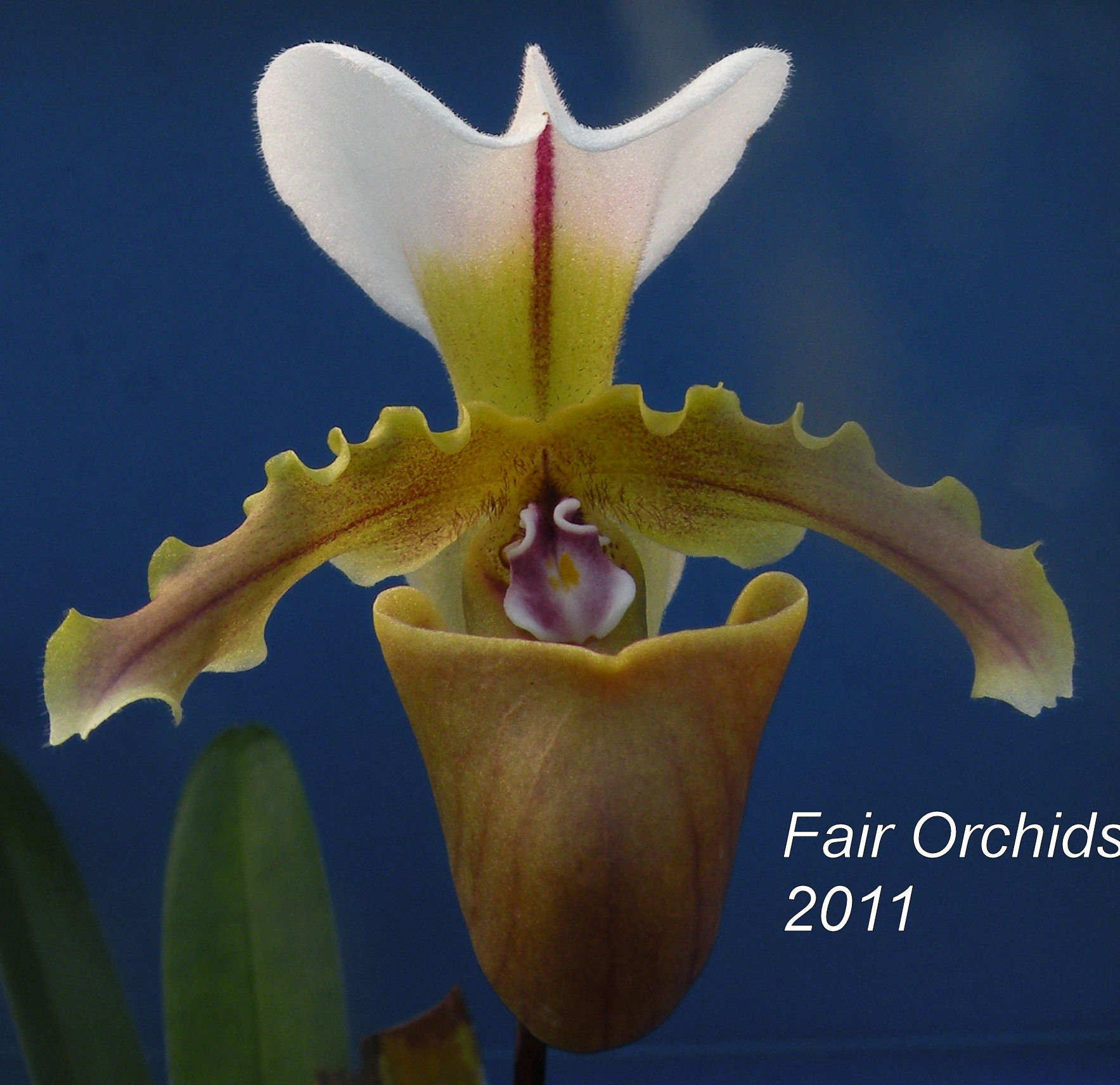
 1017 002a FO.jpg?timestamp=1330571266561)
Paph. bellatulum from the Brachypetalum group has a round, but 'cuppy' flower on a very short stem, but it is easy to see why it was selected for breeding.
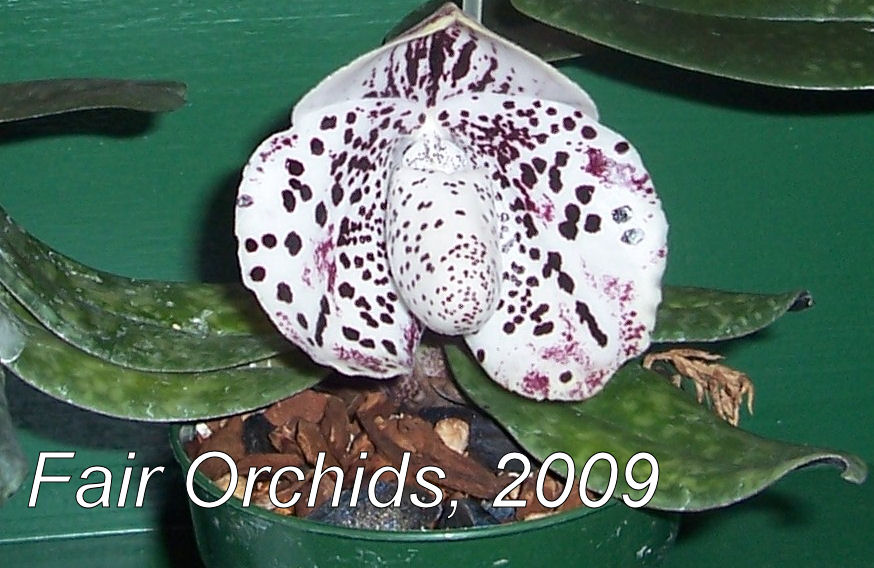
In the Barbatum group hybrids are commonly callled Maudiae type. One of the most used species in this breeding line is Paph. callosum:
Of least interest to me, but favored by many, is the multi-floral group. Here the two primary species are Paph. sanderianum (with long petals) and Paph. rothschildianum.
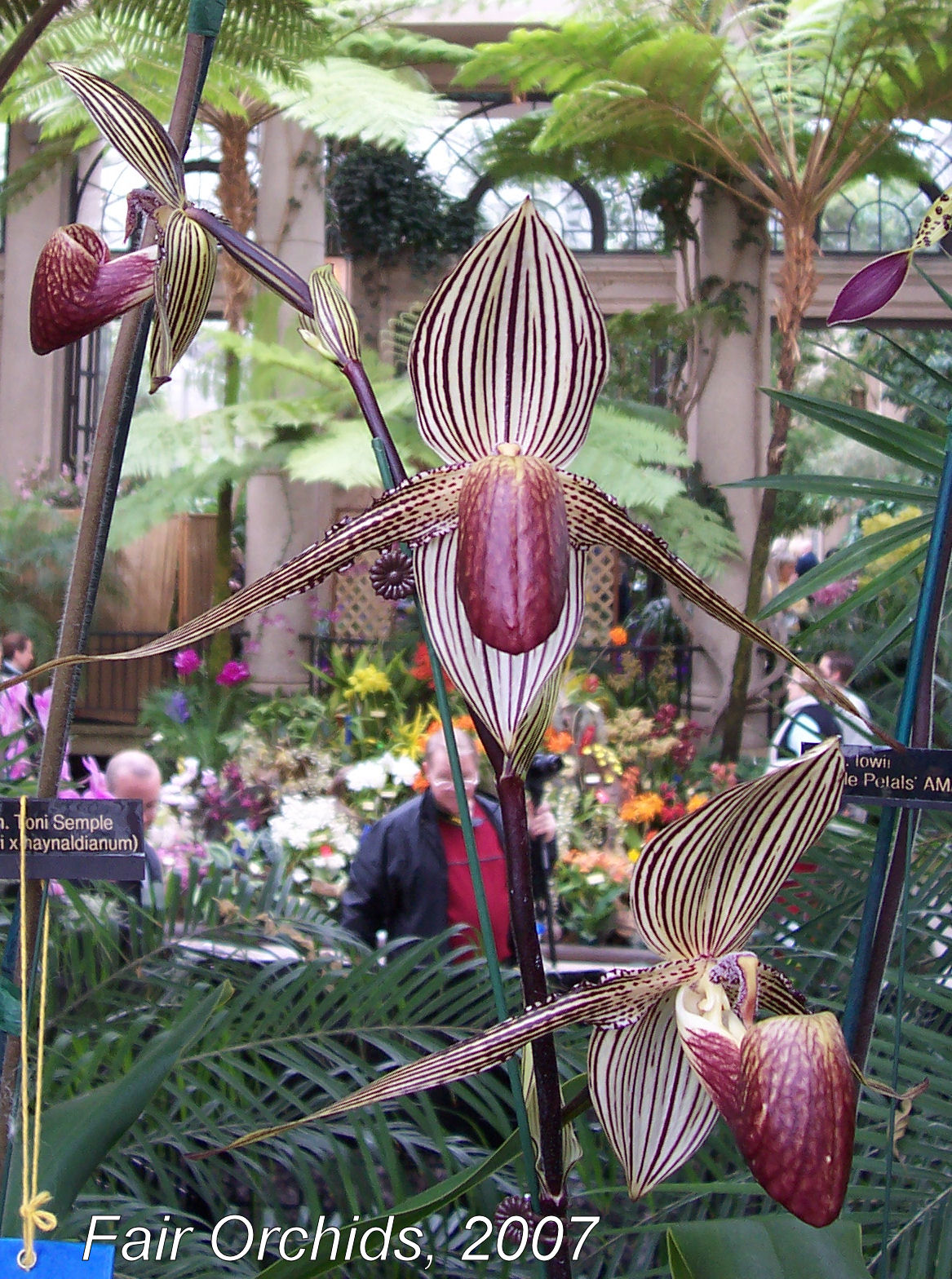
Over the last 25 years, several new species have been found in Vietnam & China, most have been placed in Parvesepalum toghether with Paph. delenatii (standard & alba).
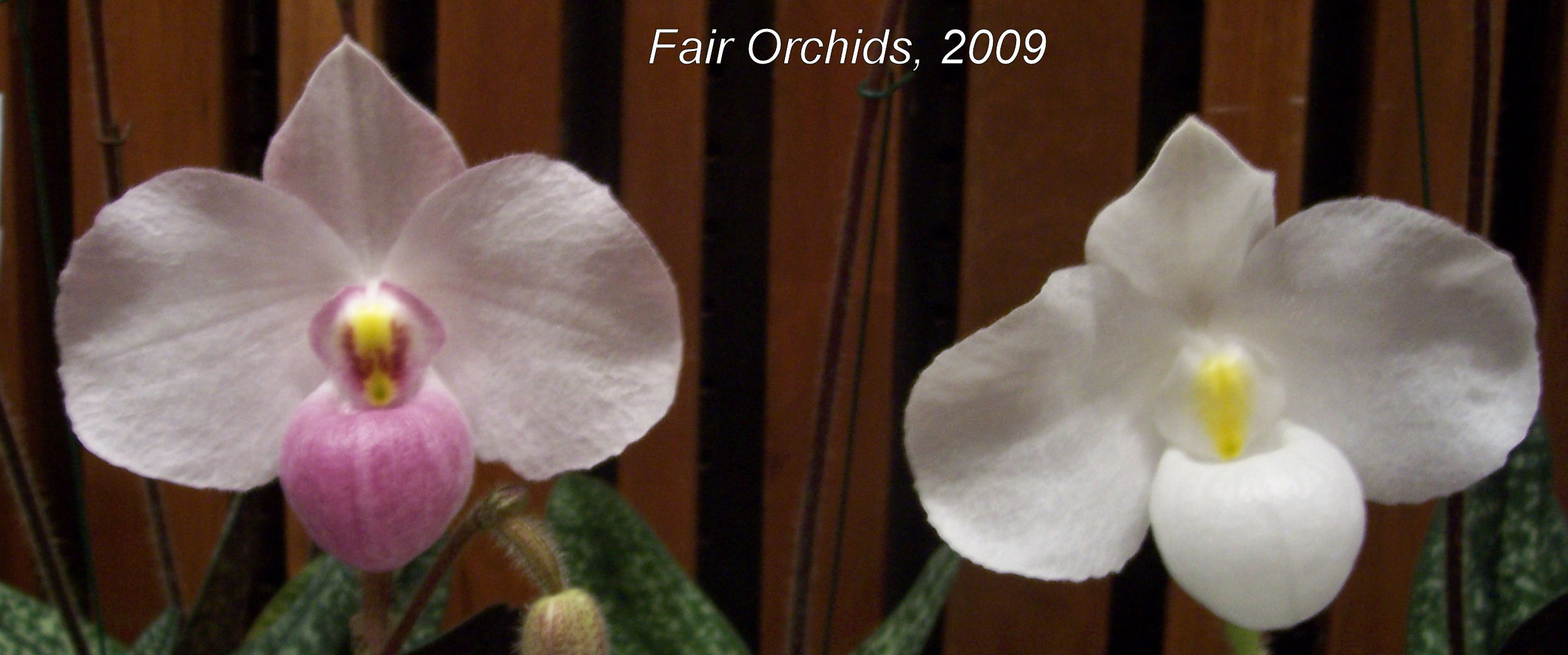
One of the most stunning is Paph. micrantum, which introduces new colors and patterns.
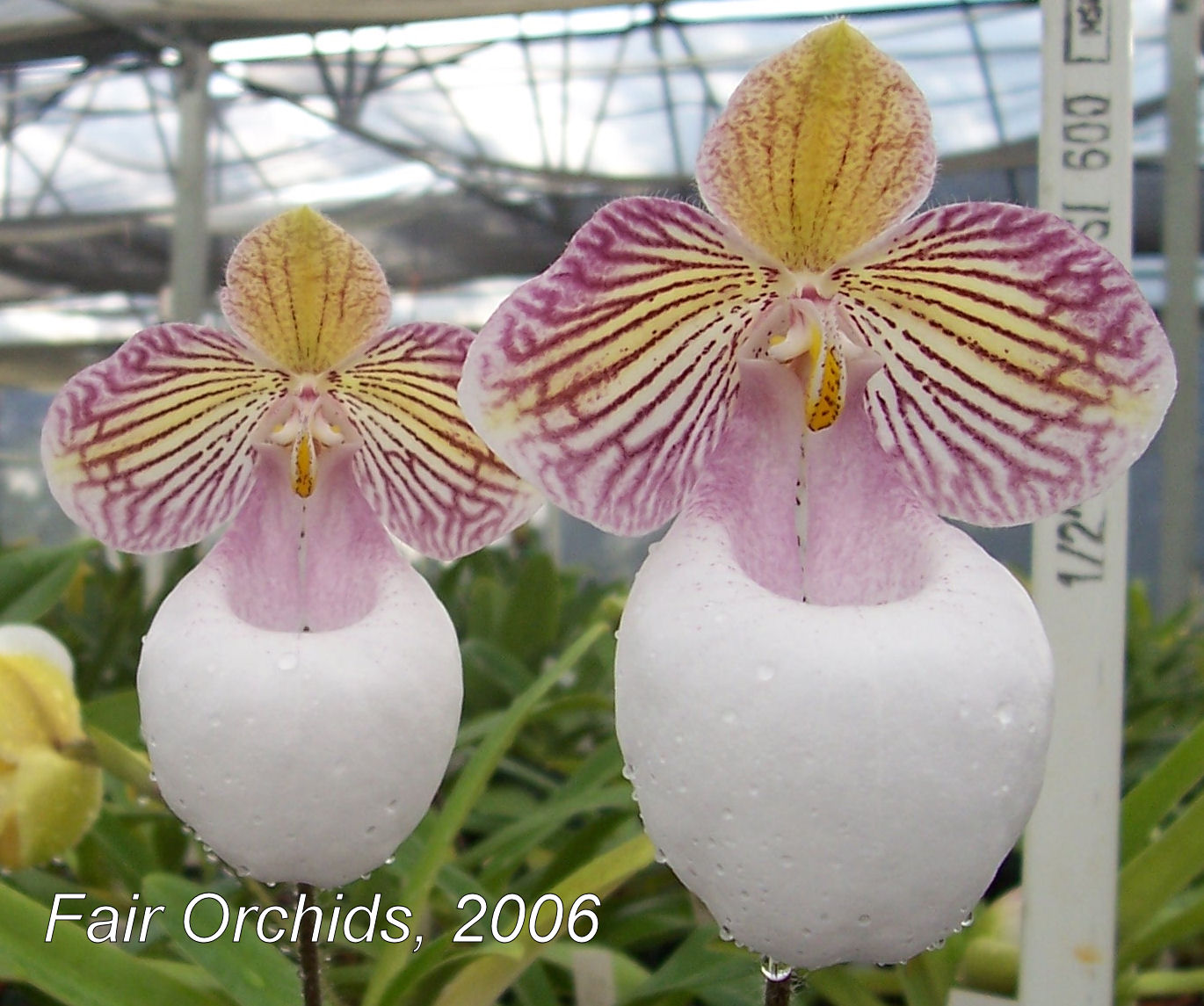
My favorite species is Paph. fairrieanum, with upswept petals and a dominant curvy edge on both dorsal & petals.
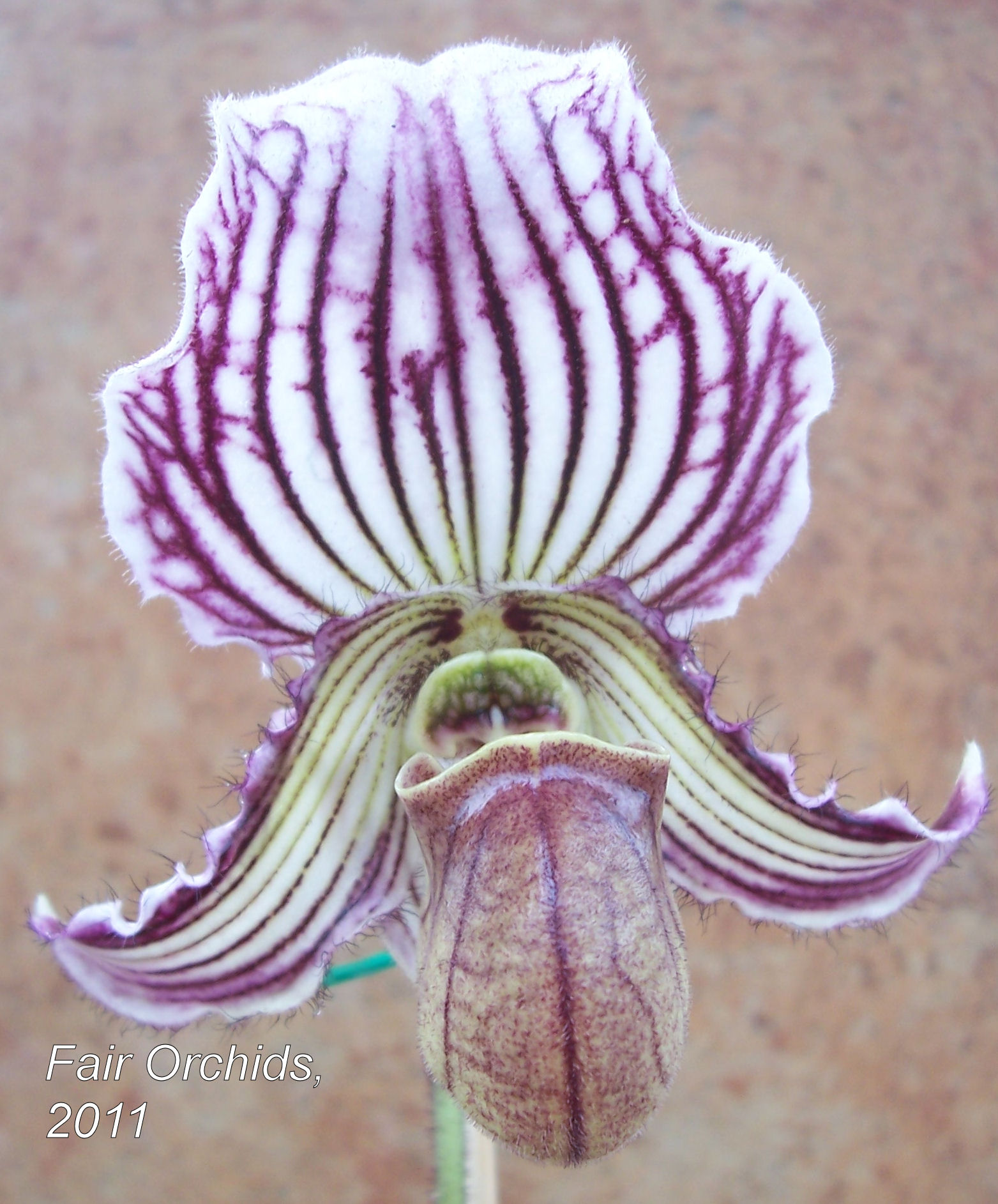
I am also partial to Paph. spicerianum (shown above). And, my 3rd choice is (next column):
Paph. charlesworthii, which contributes a broad dorsal:
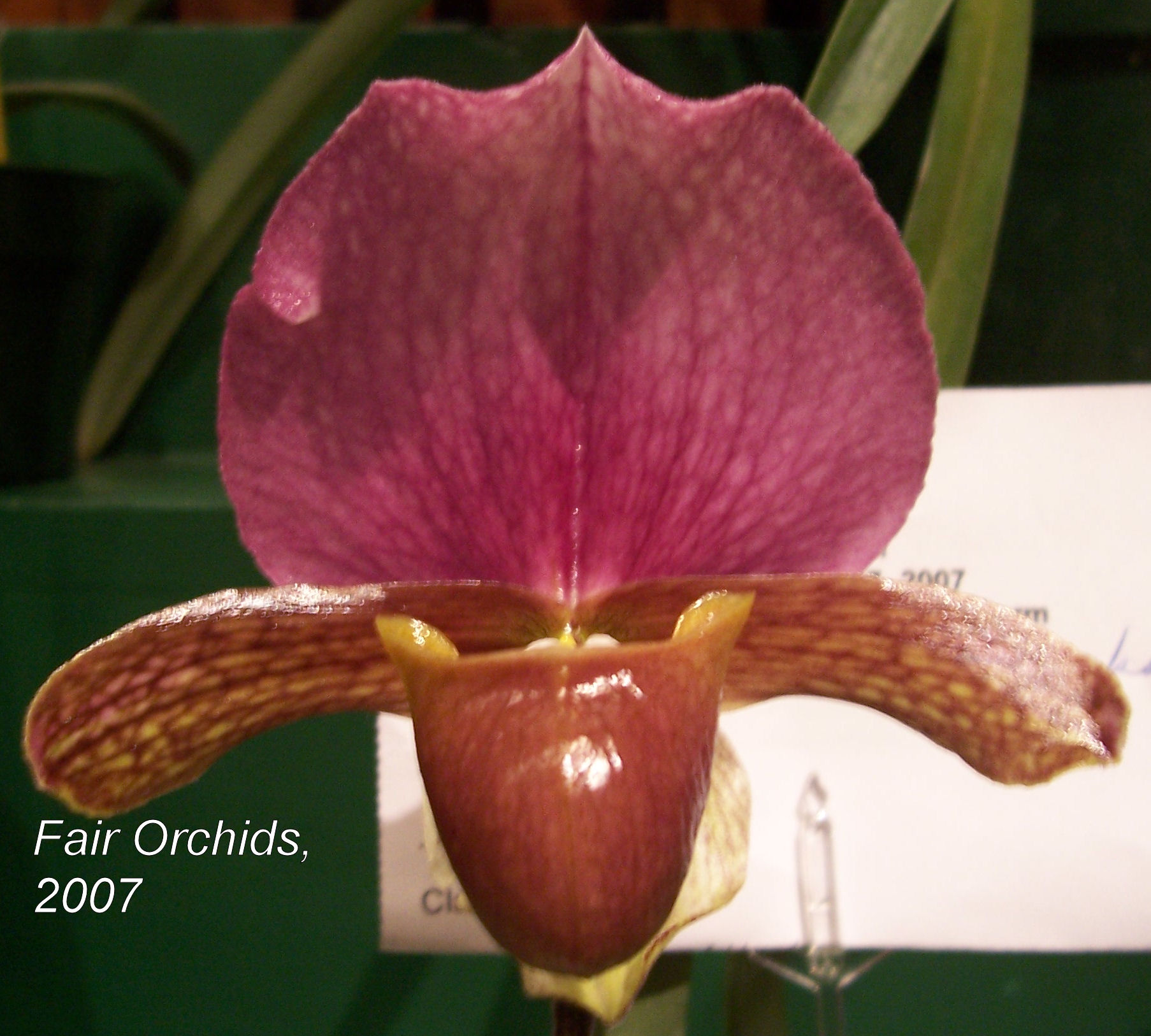
1st generation breeding led to vigorous plants, but the flowers were not that far from the parents. Paph. Leeanum (insigne x spicerianum) is found in the background of most complex hybrids
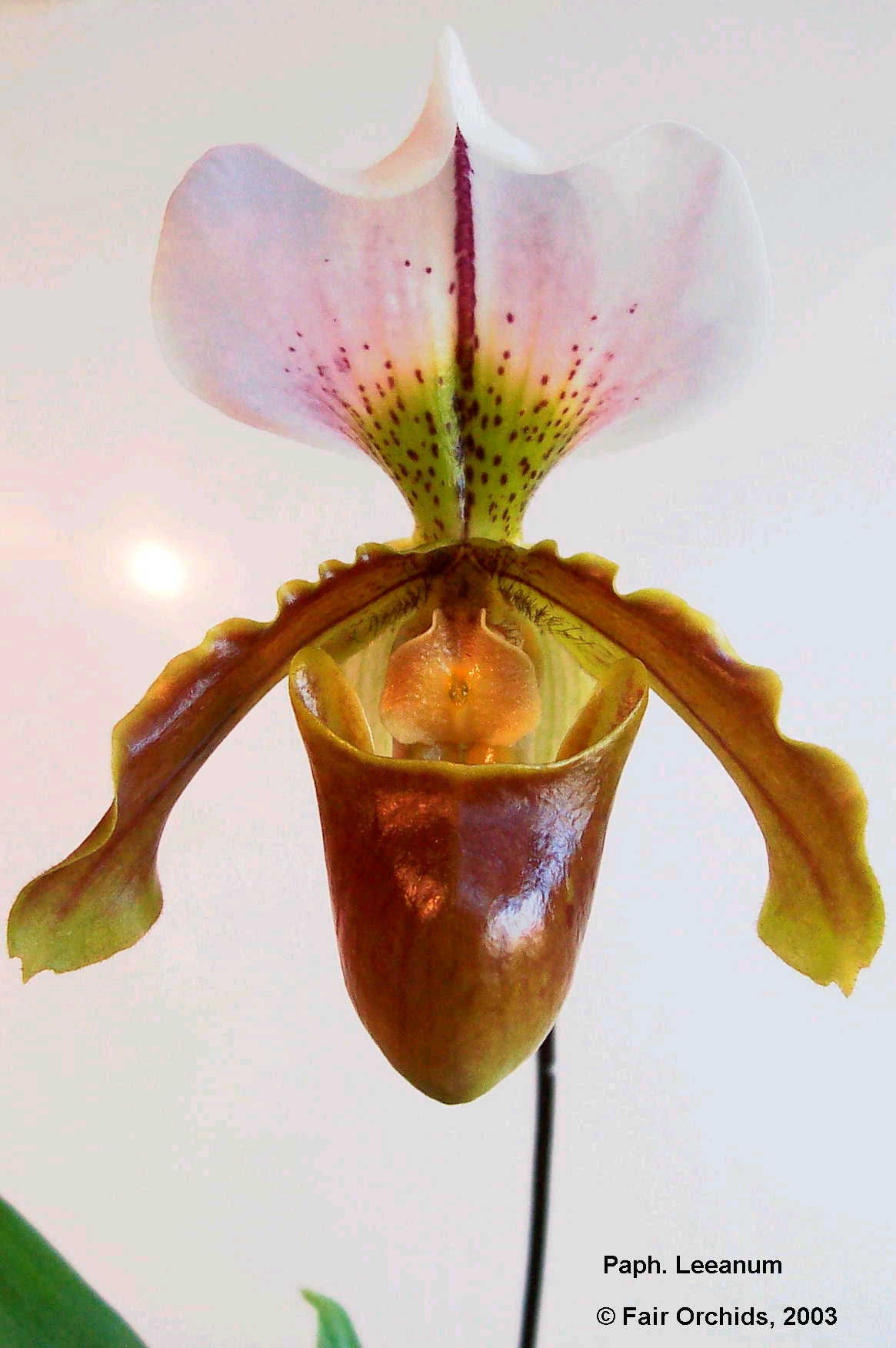
I can't claim credit for this specimen plant of Paph. Leeanum, but I did take the photo.
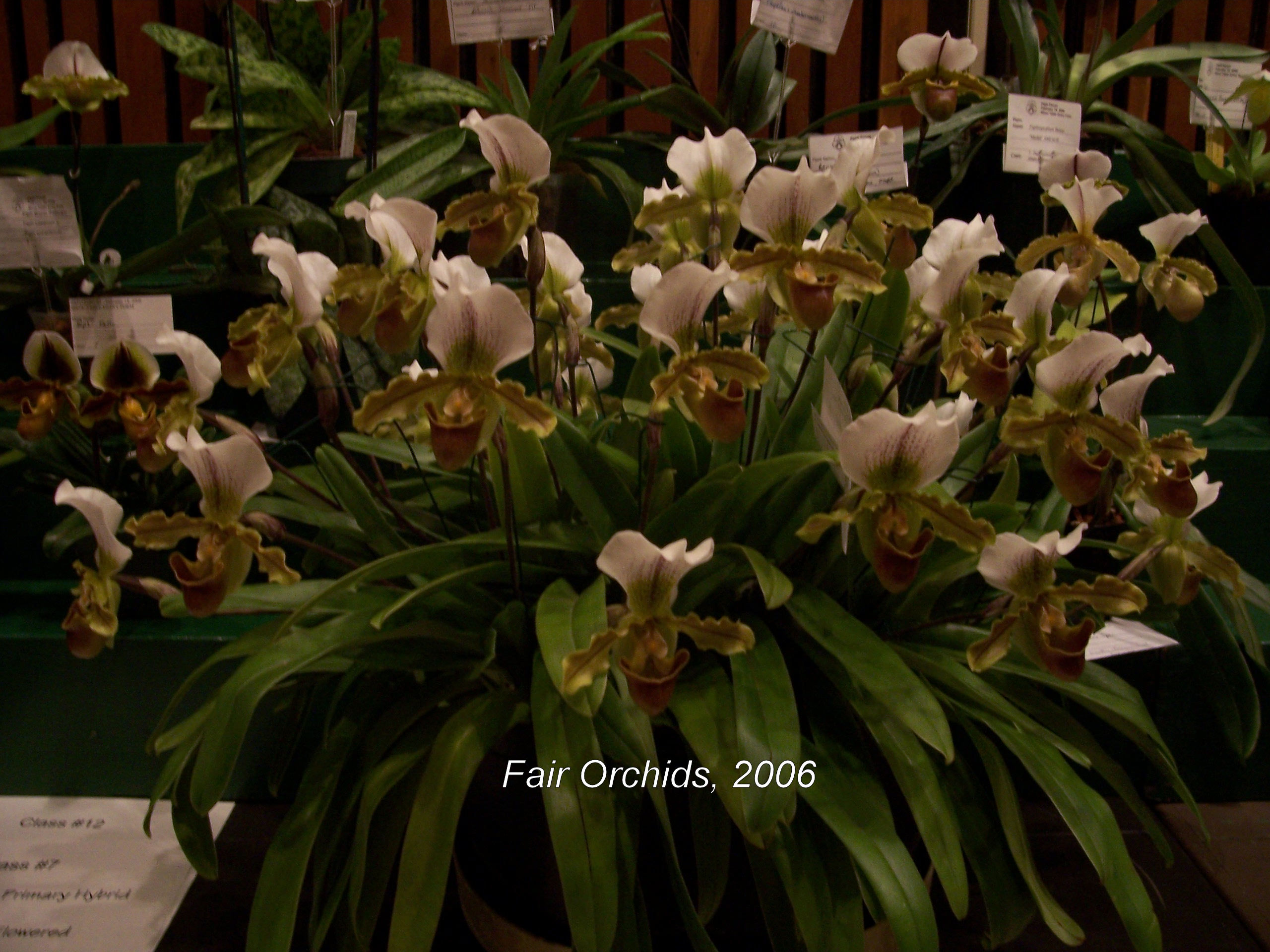
Another 1st generation hybrid is (villosum x spicerianum) = Paph. Lathamianum.
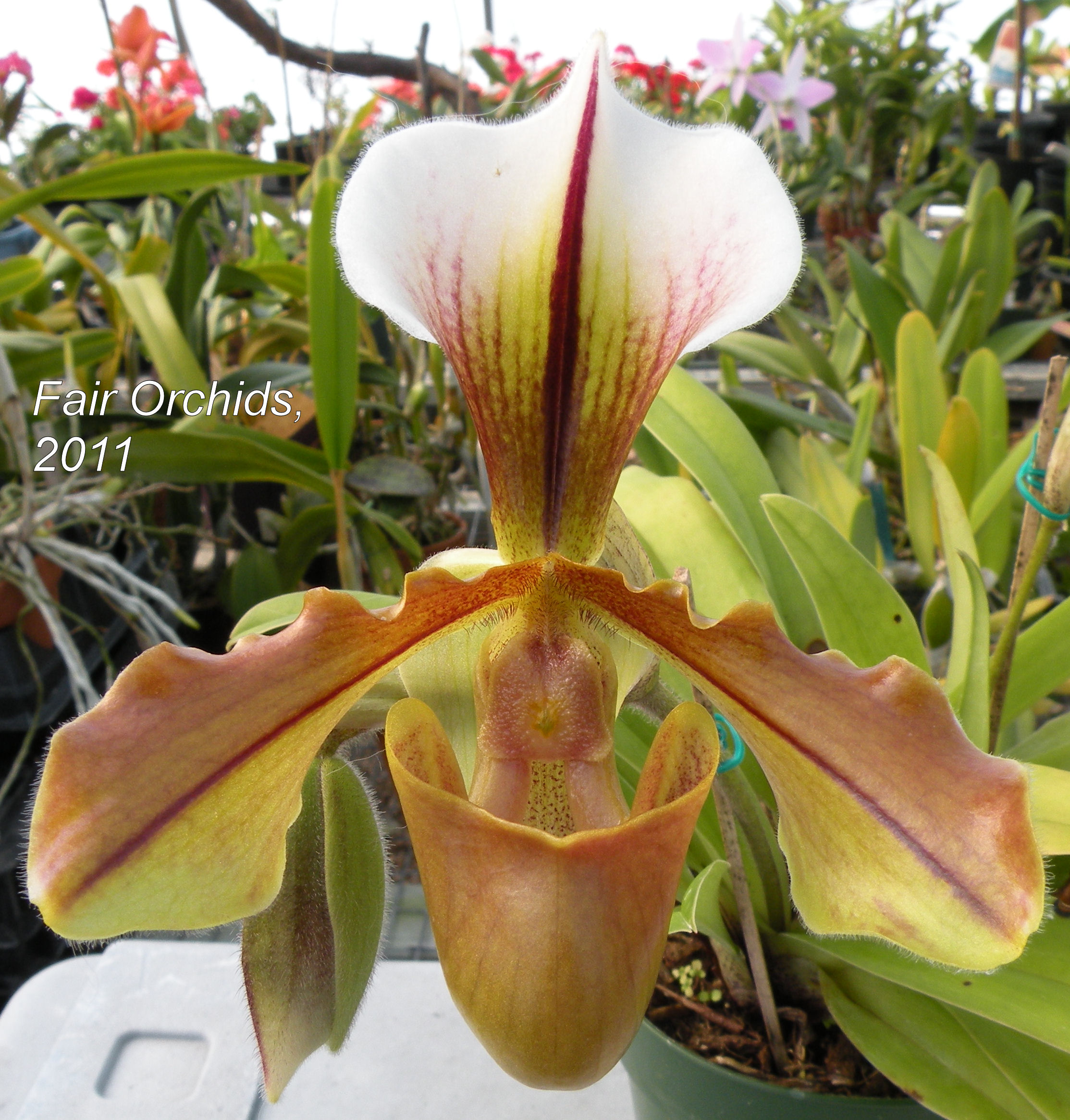
From these modest beginnings, breeders have created very large flowers (see next column). However, there have always been some who pursued different paths.
Harold Koopowitz has pursued 'tea cup' breeding, looking for miniature plants, such as Paph. Doll's Kobold (charlesworthii x henryanum), here blooming in a 2.1/4" pot.
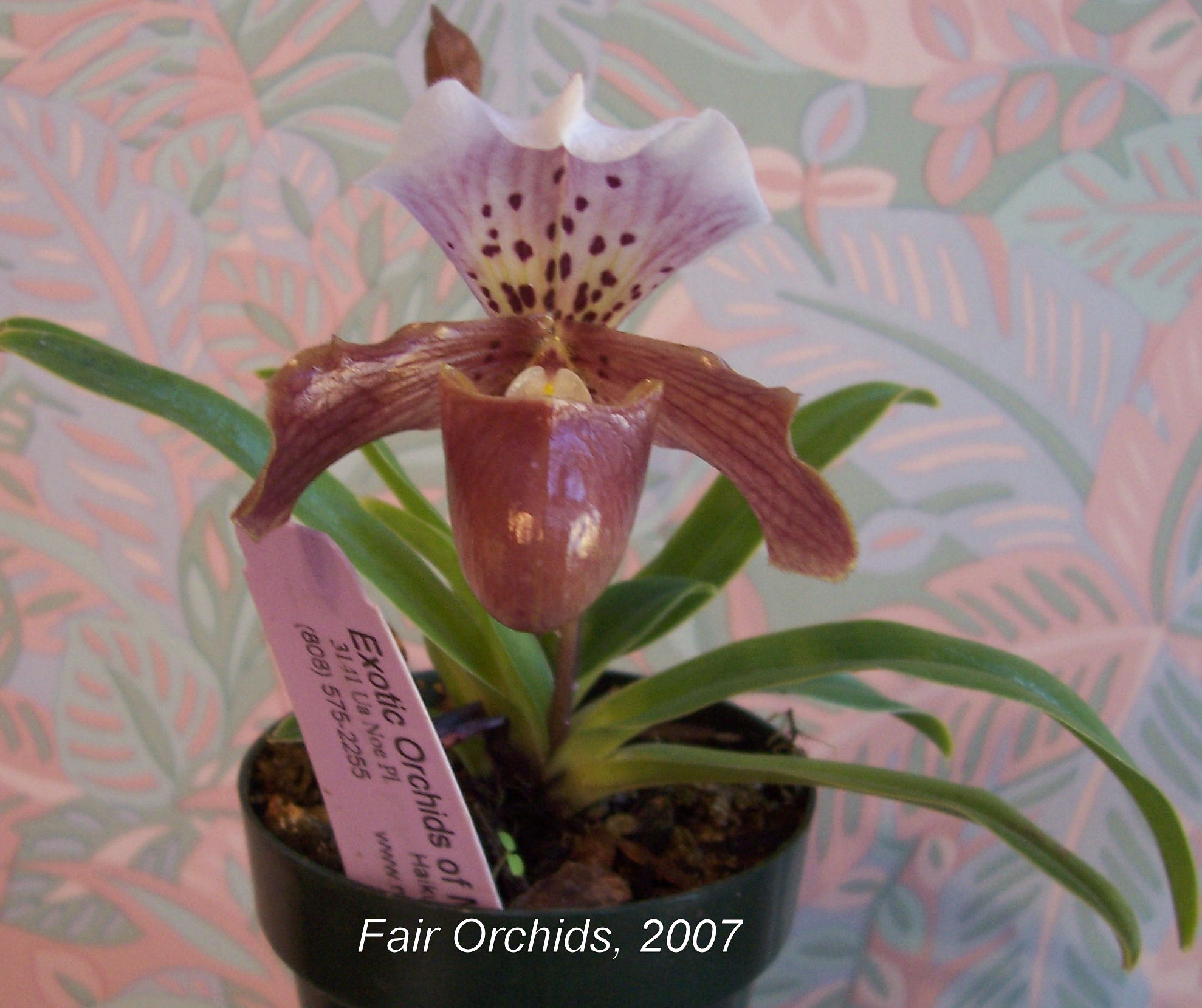
And when produced with superior parents (from The Orchid Zone), the results improve:
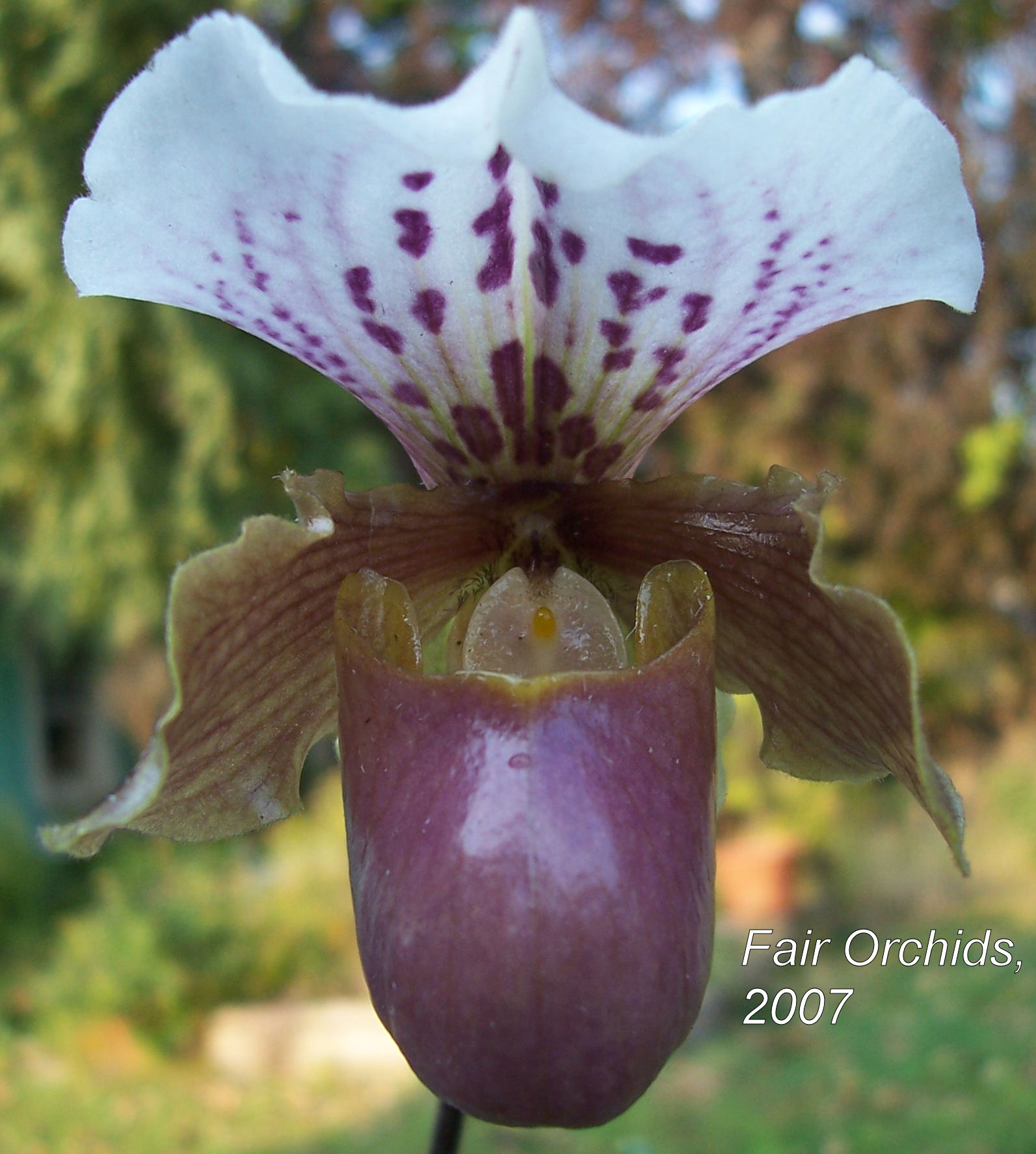
Crossing complex hybrids back to species can lead to some spectacular results (looking like the species on steroids). Ratcliffe used spicerianum to create Paph.Copper Spice
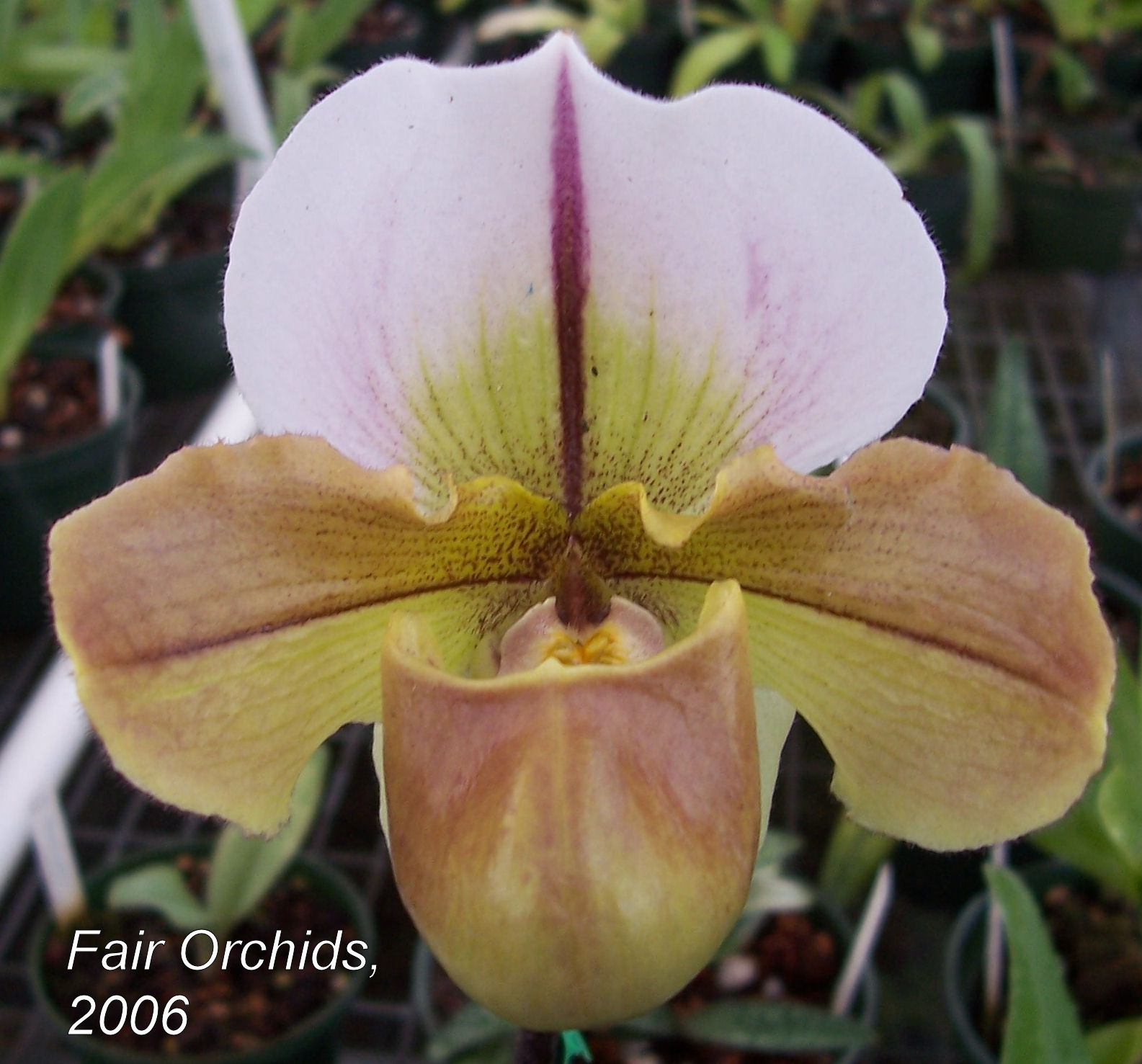
In fairrieanum hybrids, it is usually easy to recognize the parantage, as petal shape and curly edges tends to dominate. In Paph. Irish Lullaby 'C.H. #3', a complex Orchid Zone hybrid, the fairrieanum influence is several generations back, but visible.
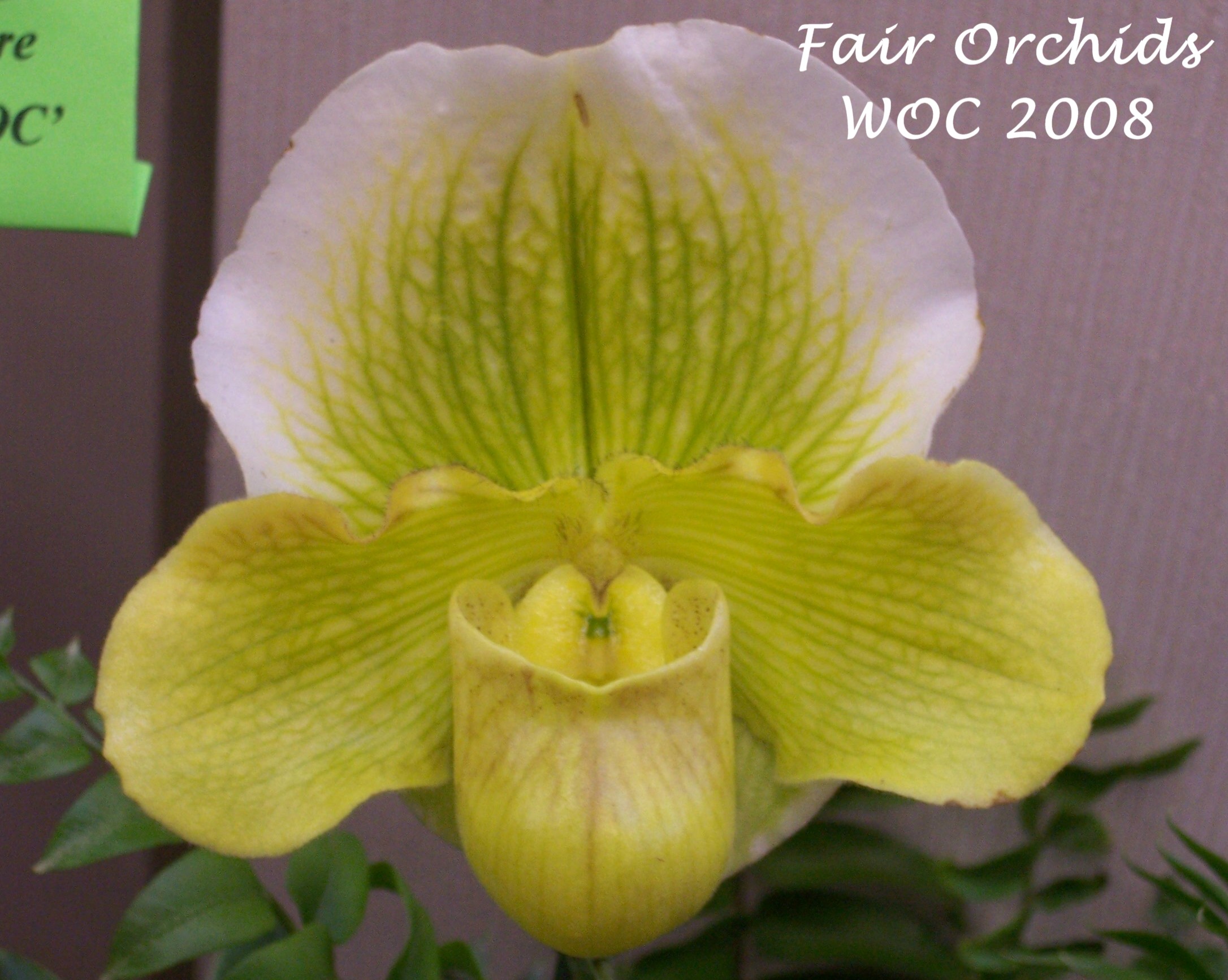
It is less visible in hybrids made with the Brachy group, but there are still some signs in Paph. Angela (fairrieanum x niveum).
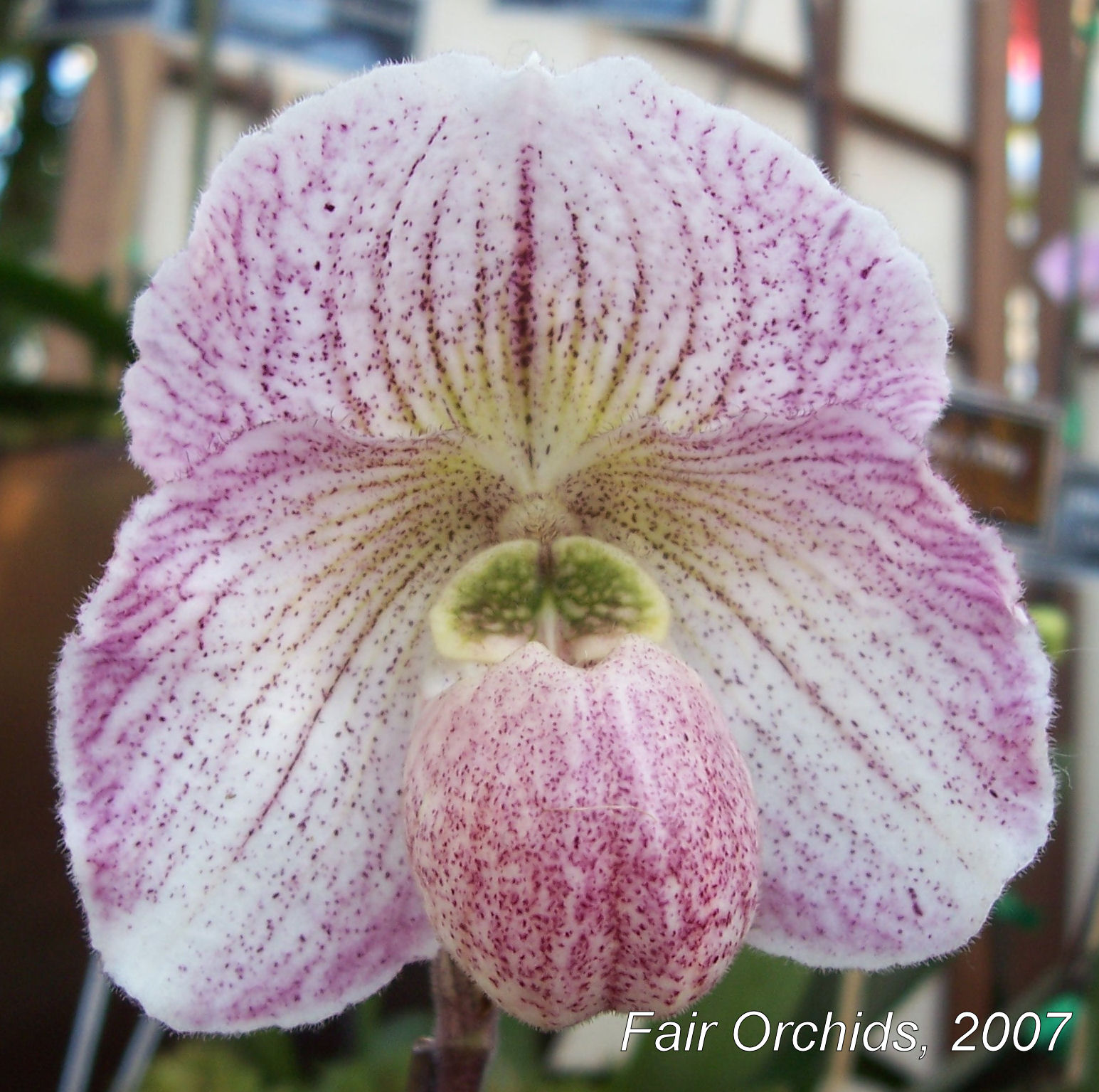 And it is a bit easier to see in (Sierra Lace x fairrieanum). I am showing two clones to illustrate the variation in seed grown plants.
And it is a bit easier to see in (Sierra Lace x fairrieanum). I am showing two clones to illustrate the variation in seed grown plants.
 070217 086 FO.jpg?timestamp=1330612675802)
 070418 036 FO.jpg?timestamp=1330612771582)
The connection is almost impossible to see in Paph. Ali Taba 'Rosepoint' = (Paeony x fairrieanum), which is heavily dominated by the pod parent, a complex hybrid with strong influence of Paph. bellatulum.
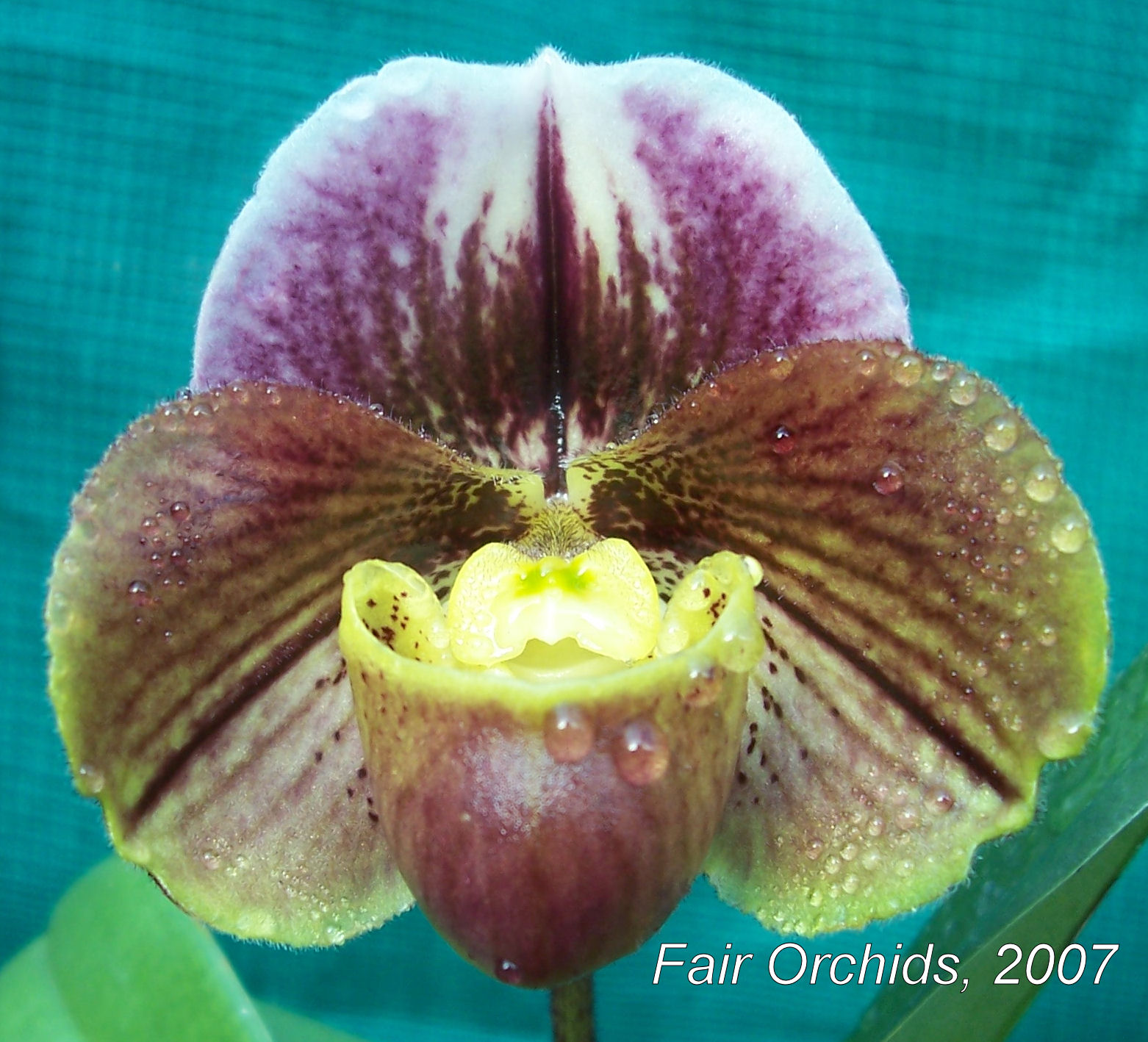 Crossed with Barbatum group, the influence is usually clear, here in Paph. H. Ballentine (fairrieanum x purpuratum)
Crossed with Barbatum group, the influence is usually clear, here in Paph. H. Ballentine (fairrieanum x purpuratum)
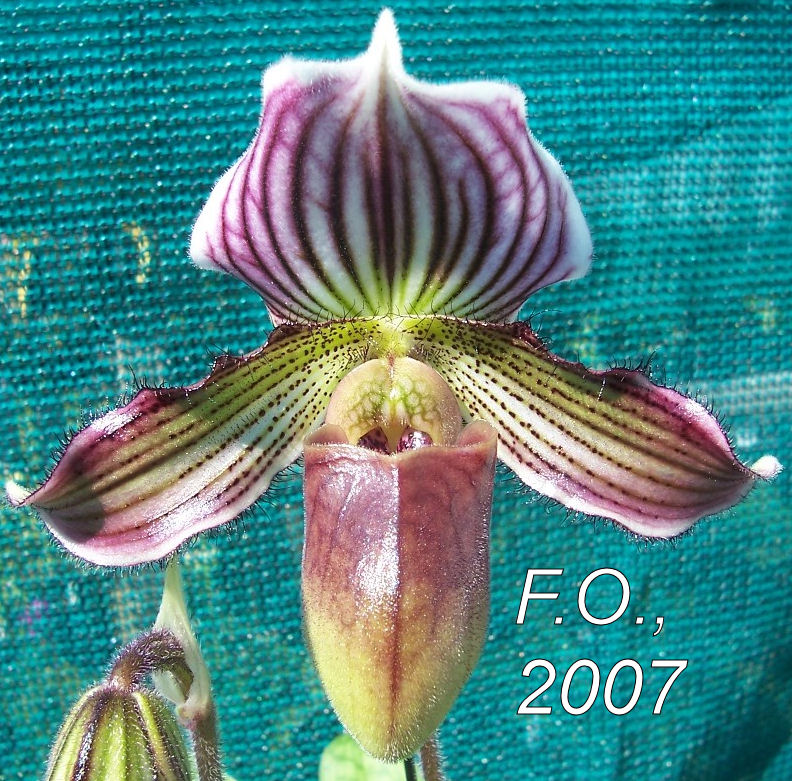
With genetic input from 4-10 species, and 6-15 generations of judicious breeding, on rare occasions this type of results can be achieved:
Paph. Silent Knight
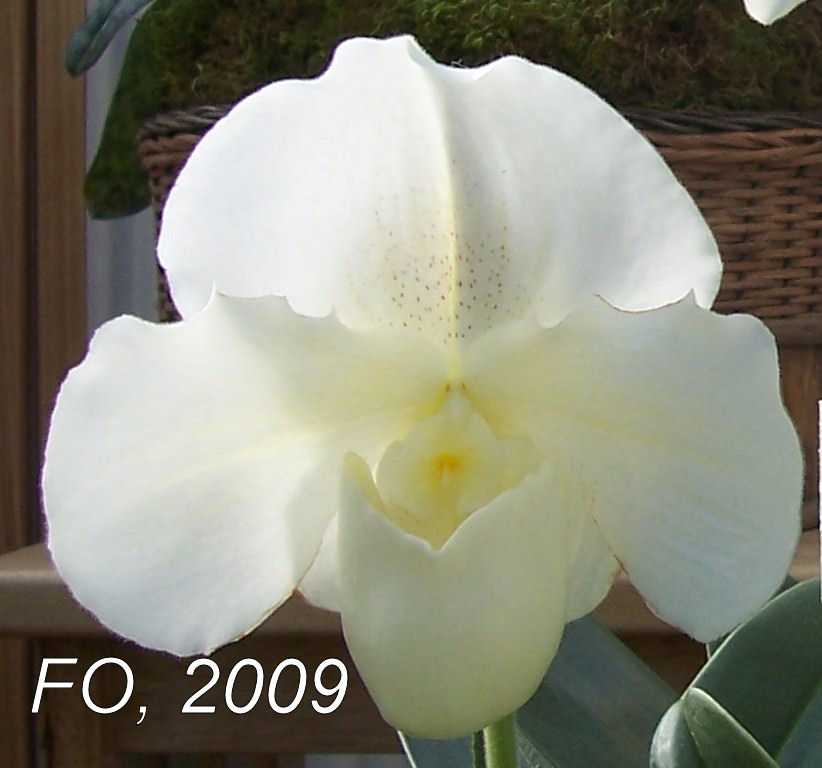
Paph. Silent Knight 'Crystelle' AM
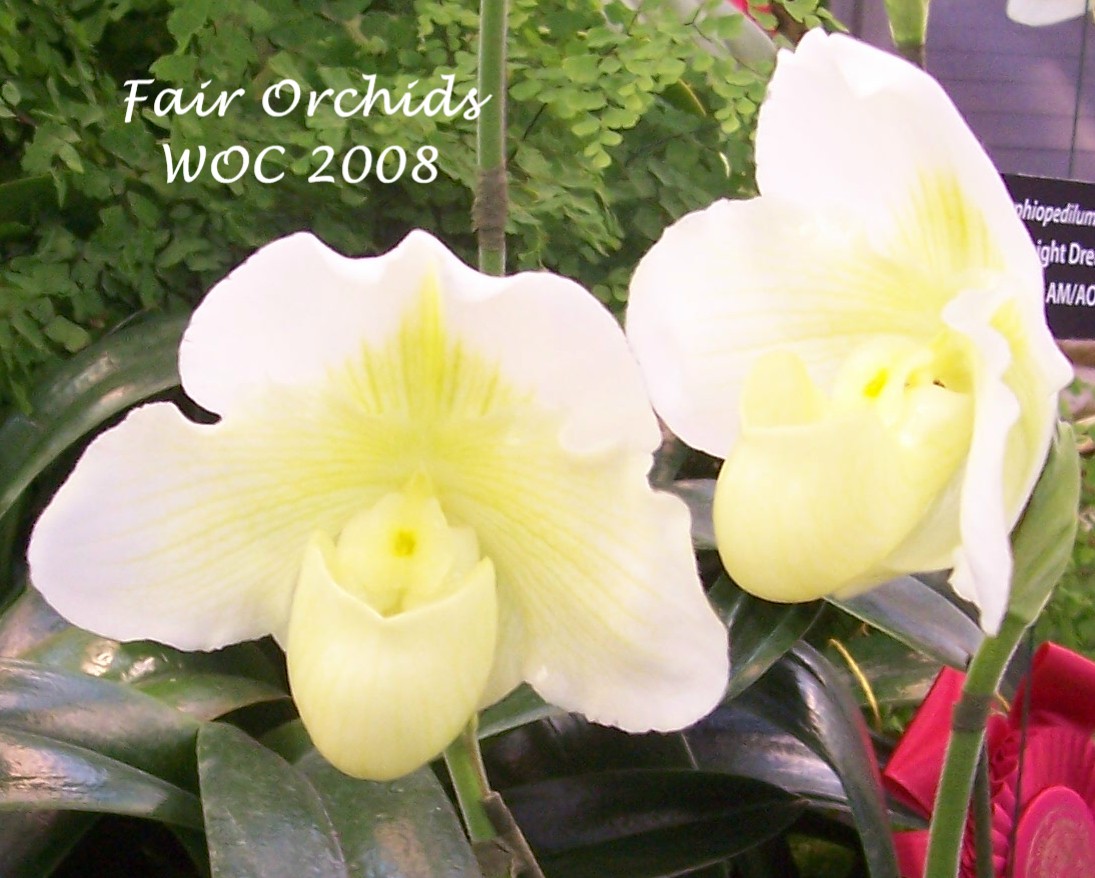
Paph. Saturday Night Album 'Gold Fever'
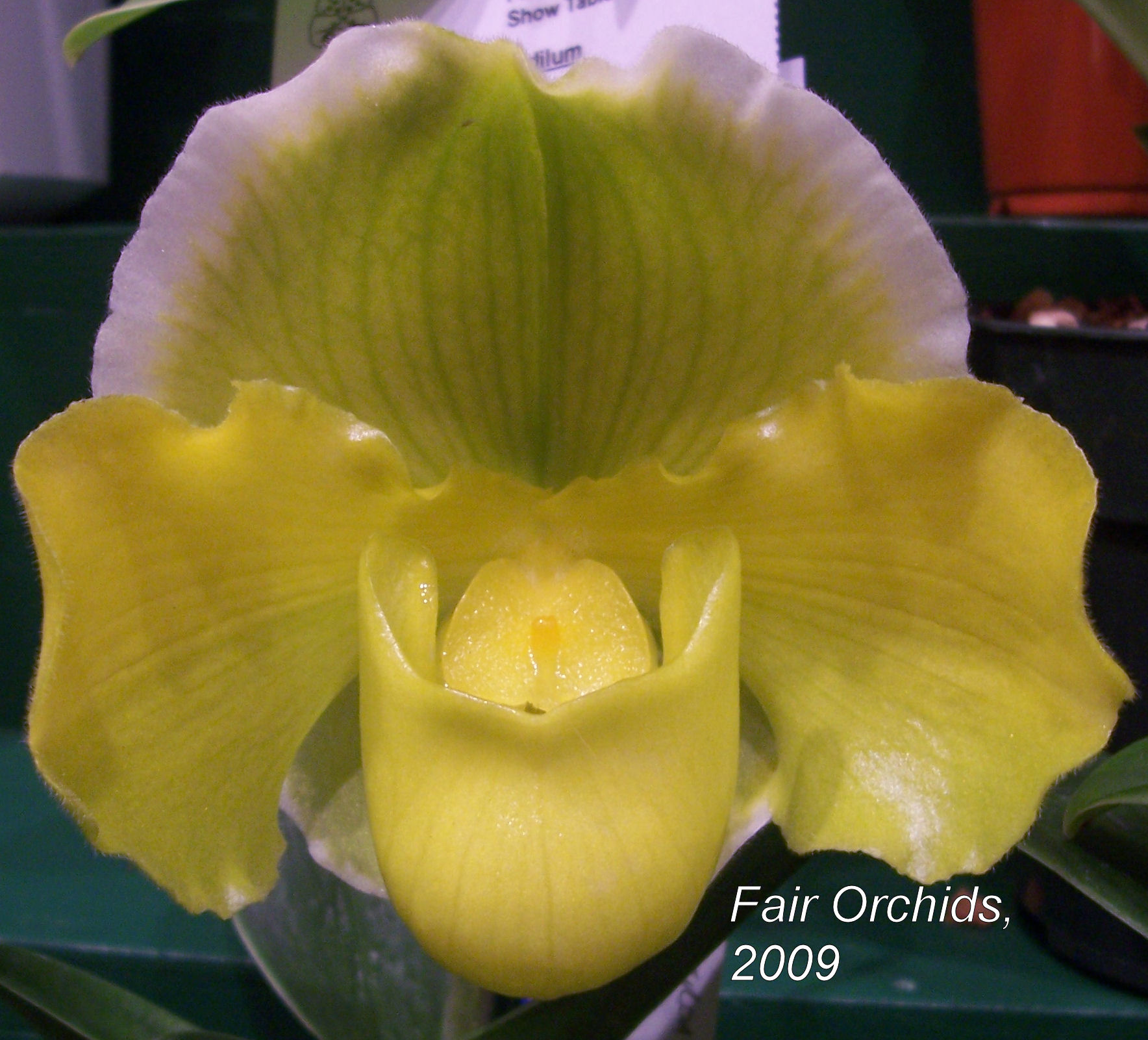
Paph. Sorcerer's Stone 'Orlando'
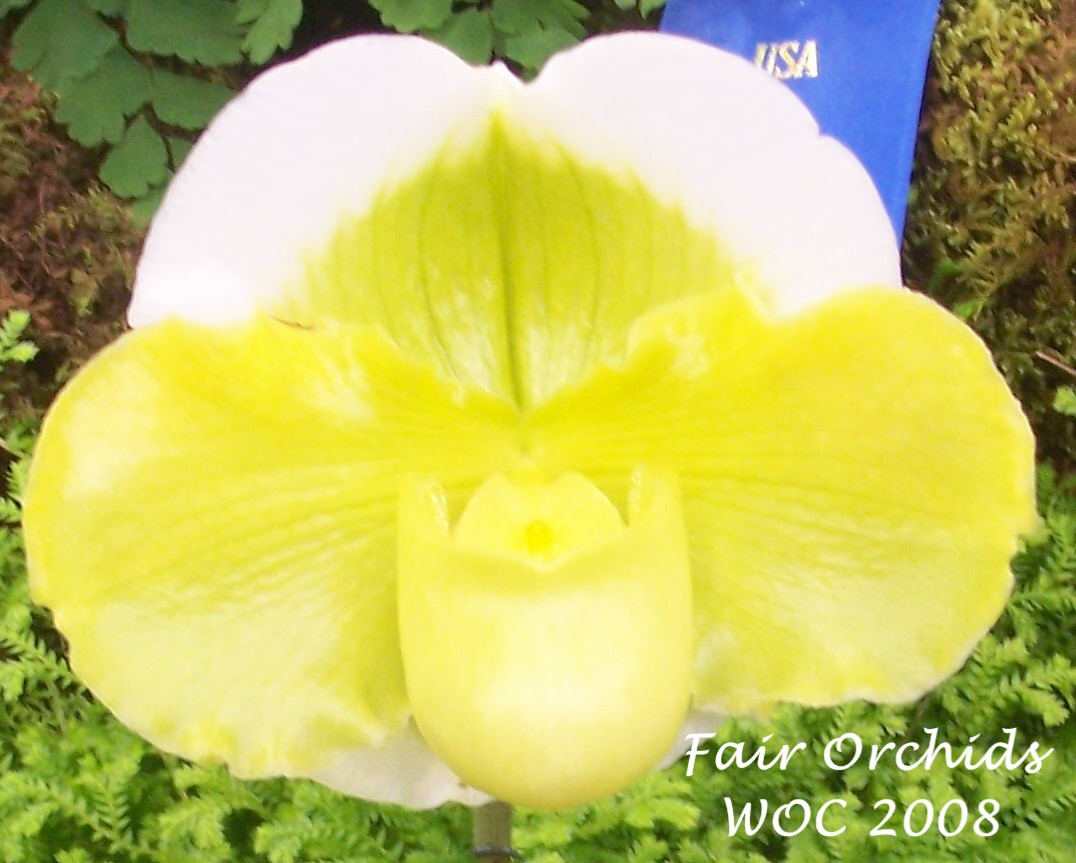
Paph. Jenna Marie 'Sparkle'
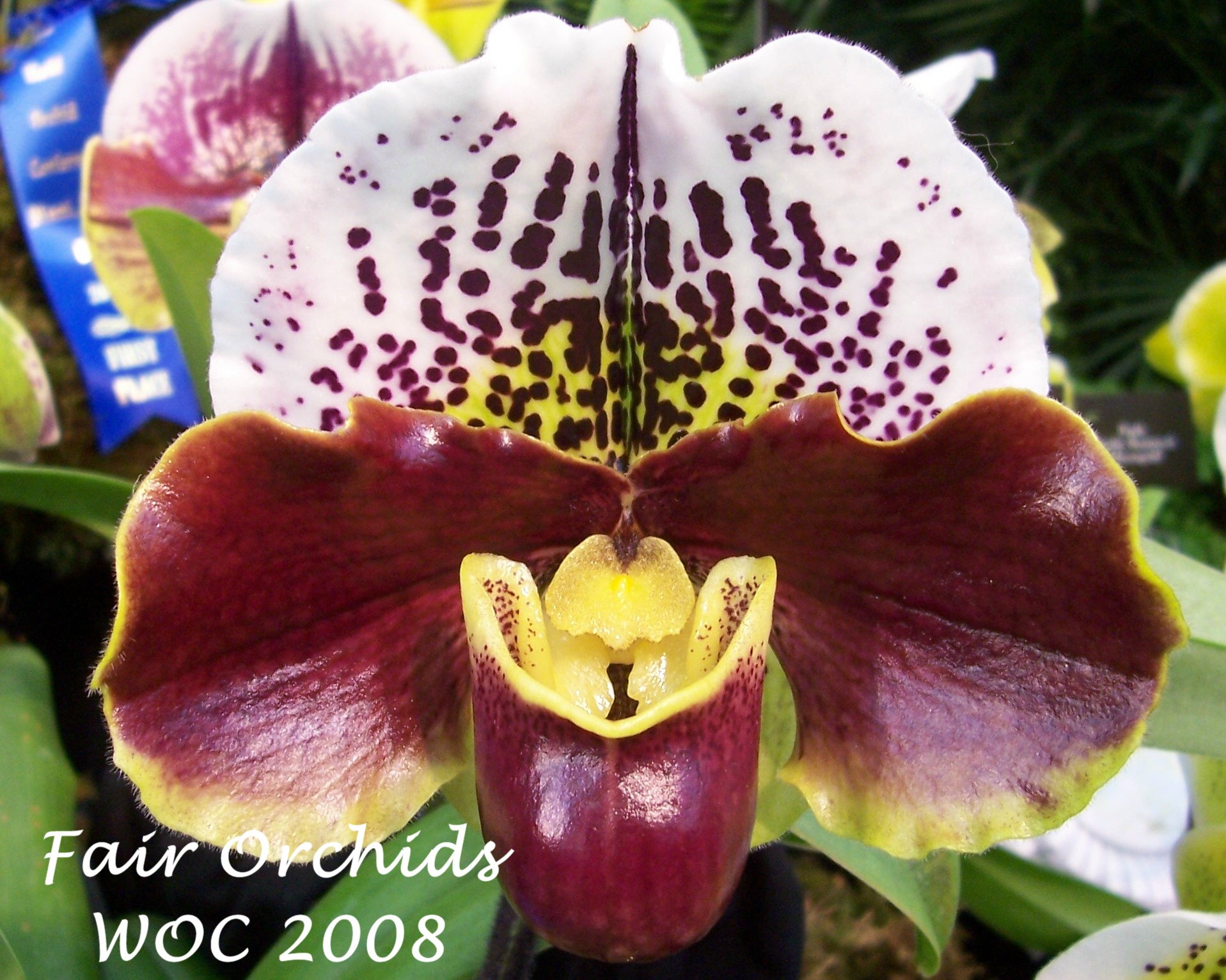
Paph. Tiger Hill 'Jungle Feber' HCC
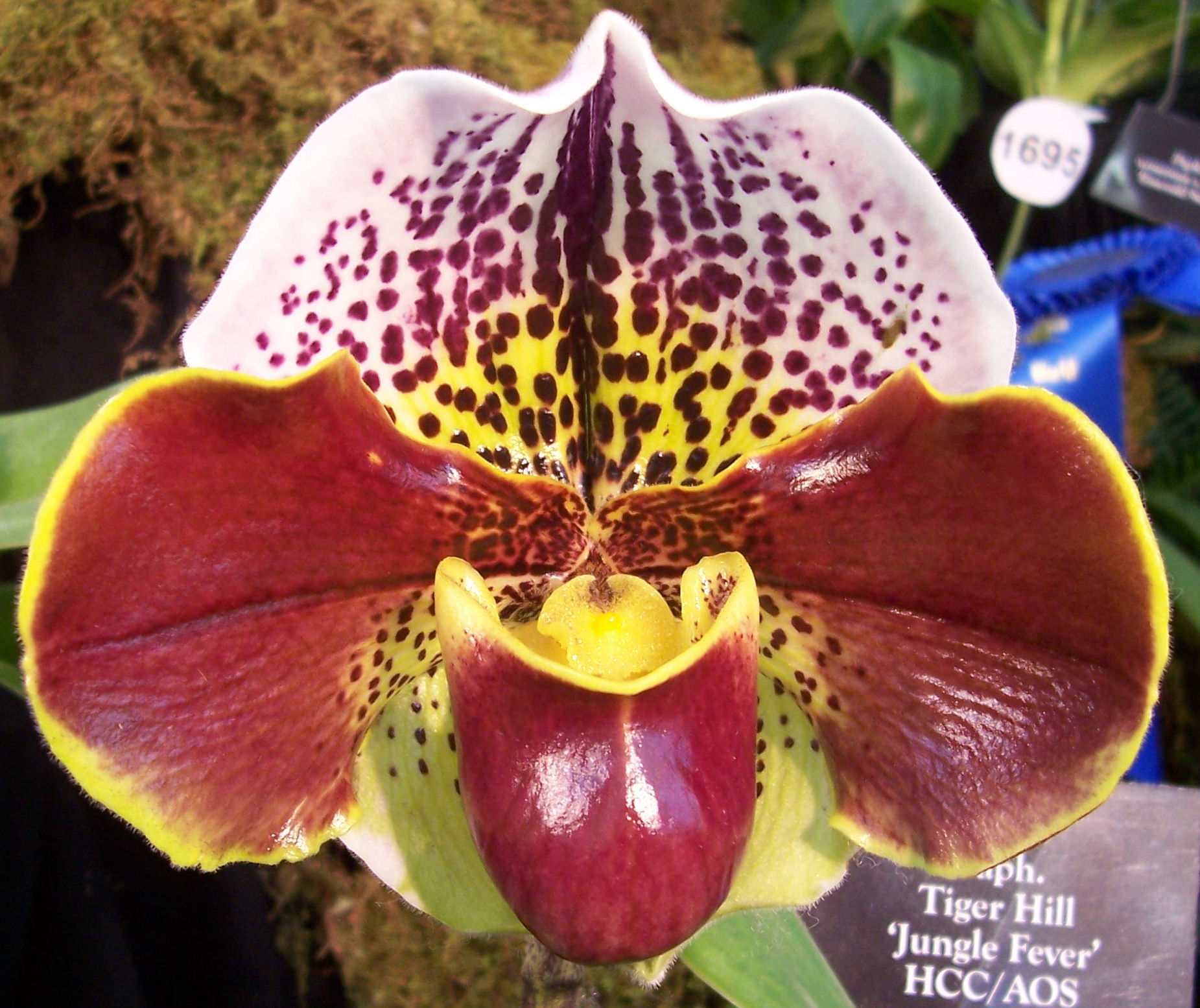
Paph. Startler 'Glace' AM/AOS
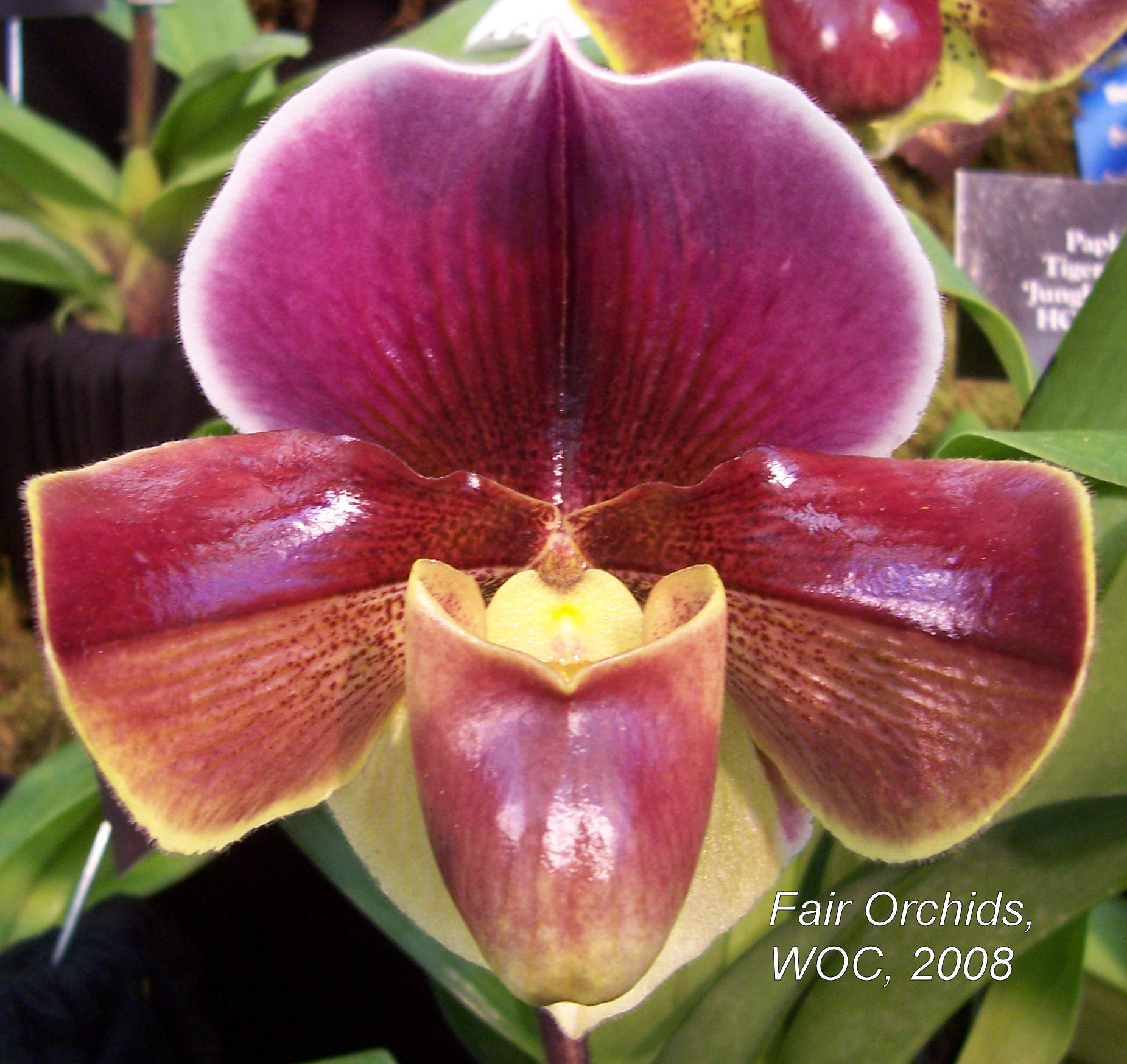
And from different lines of breeding, also something like this Paph. China Moon 'Winter Moon' AM/AOS.
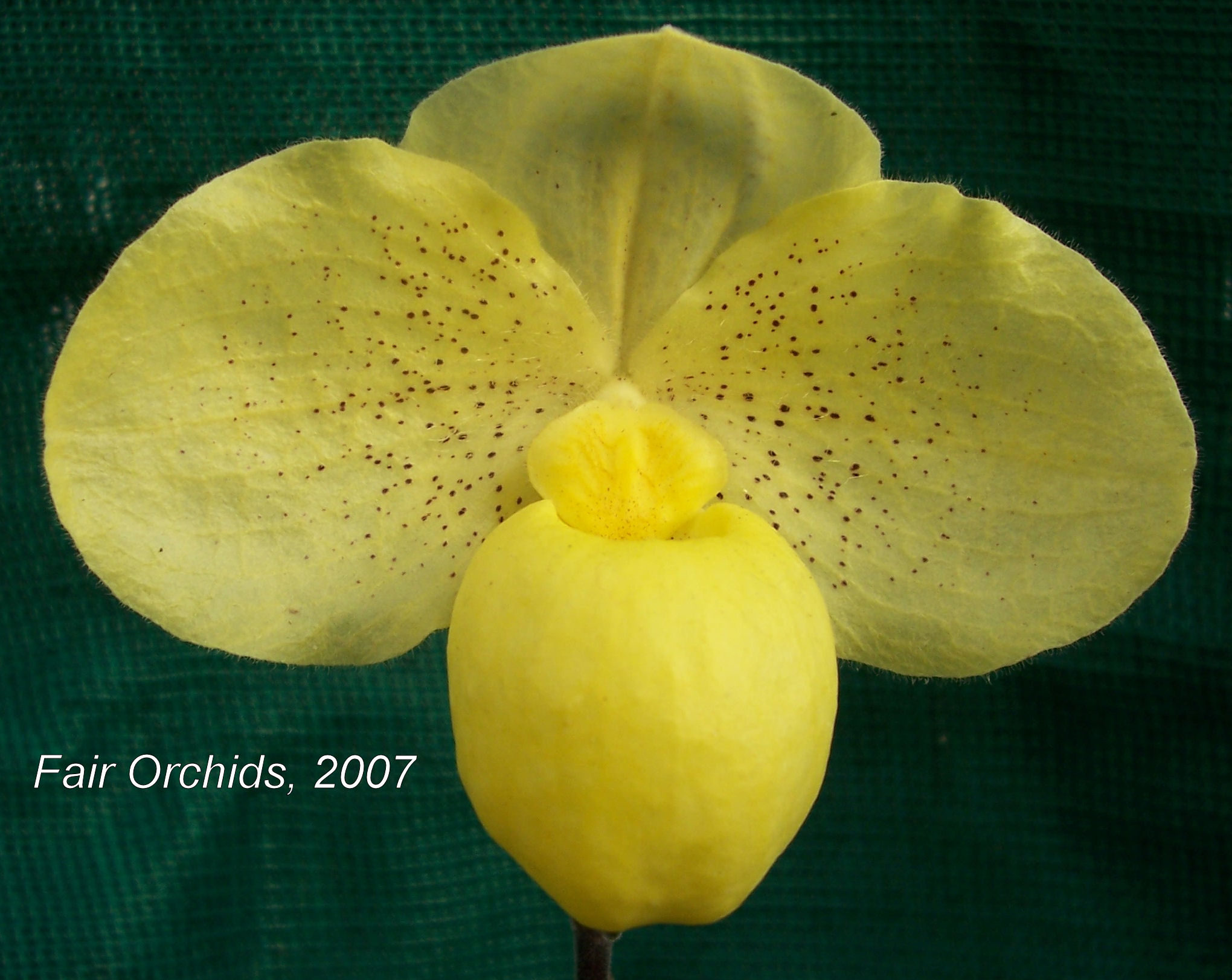
Crossing two long petalled species in the multi-floral group leads to truly long petals. Paph. Michael Koopowitz (philippinense x sanderianum).
 100_6200 FO.jpg?timestamp=1330609068520)
By crossing the multi-floral rothschildianum into the Brachypetalum group, we can find the bold Paph. Dragon Lord.
 100_6127 FO.jpg?timestamp=1330608759142)
Hybridizing between the Maudiae group and the Brachypetalum group can lead to Paph. Pink Coral 'Krull-Smith' HCC AOS
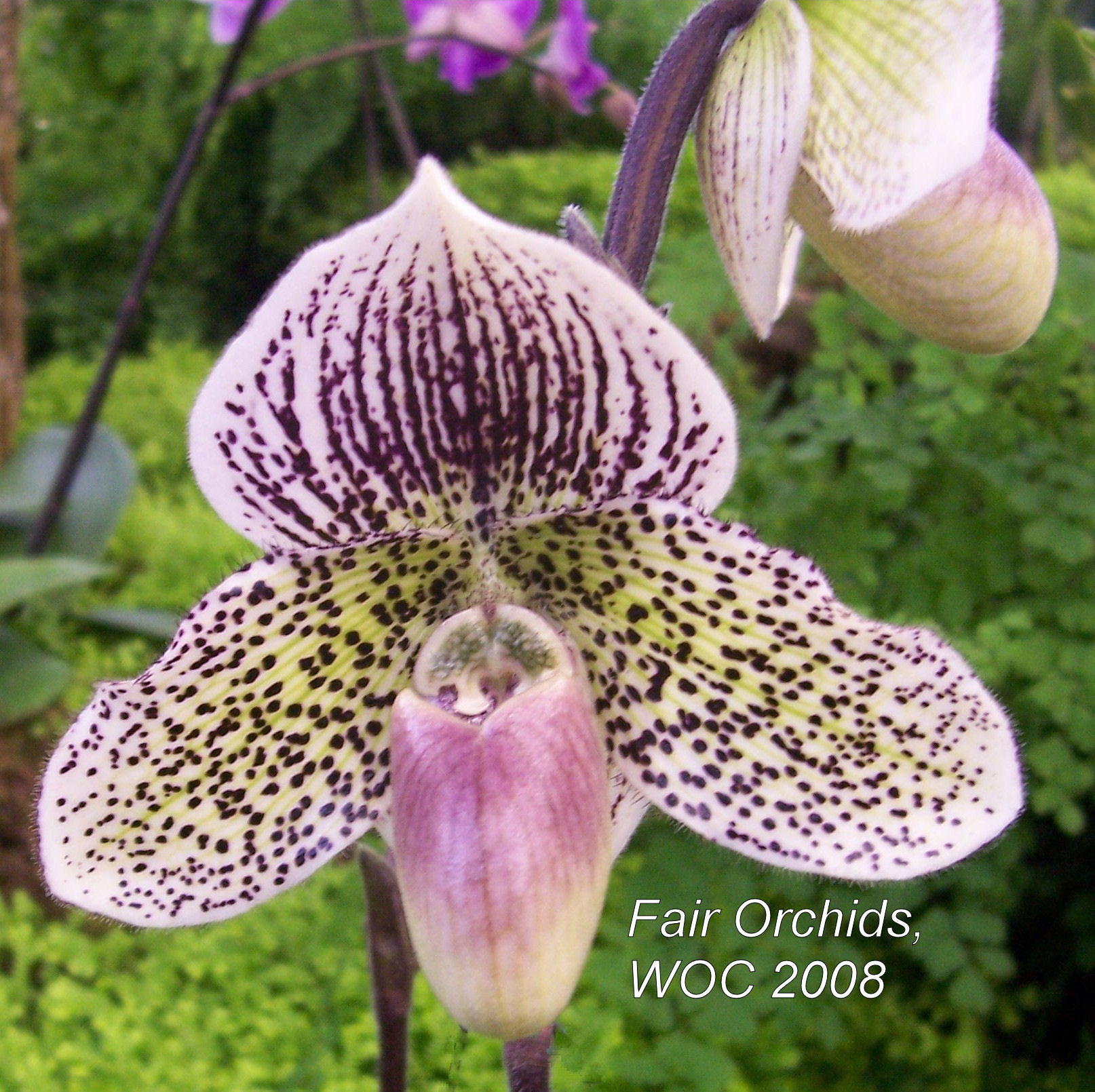
And Paph. Amahashi shows the influence of Paph. micrantum.
